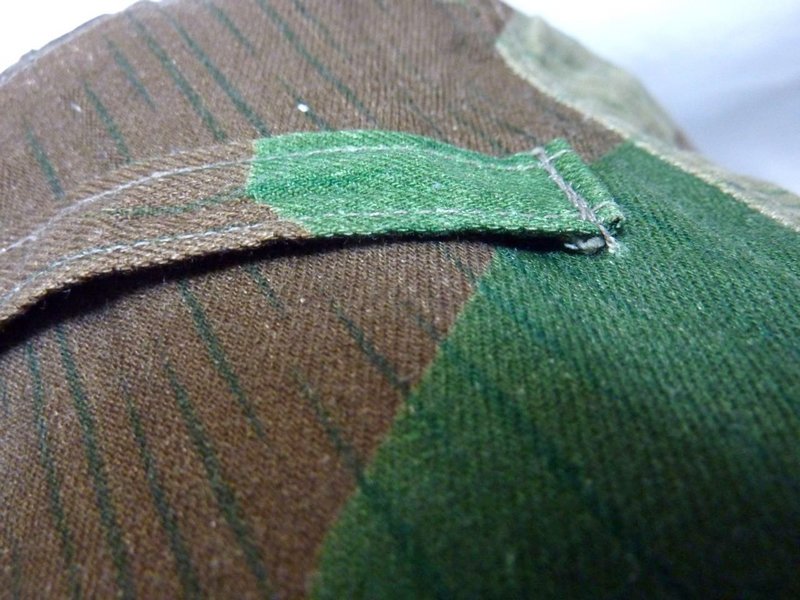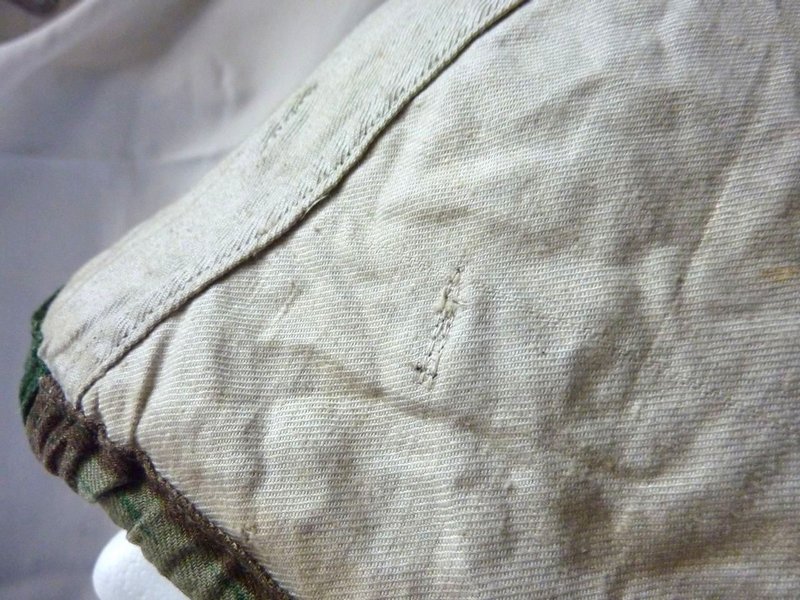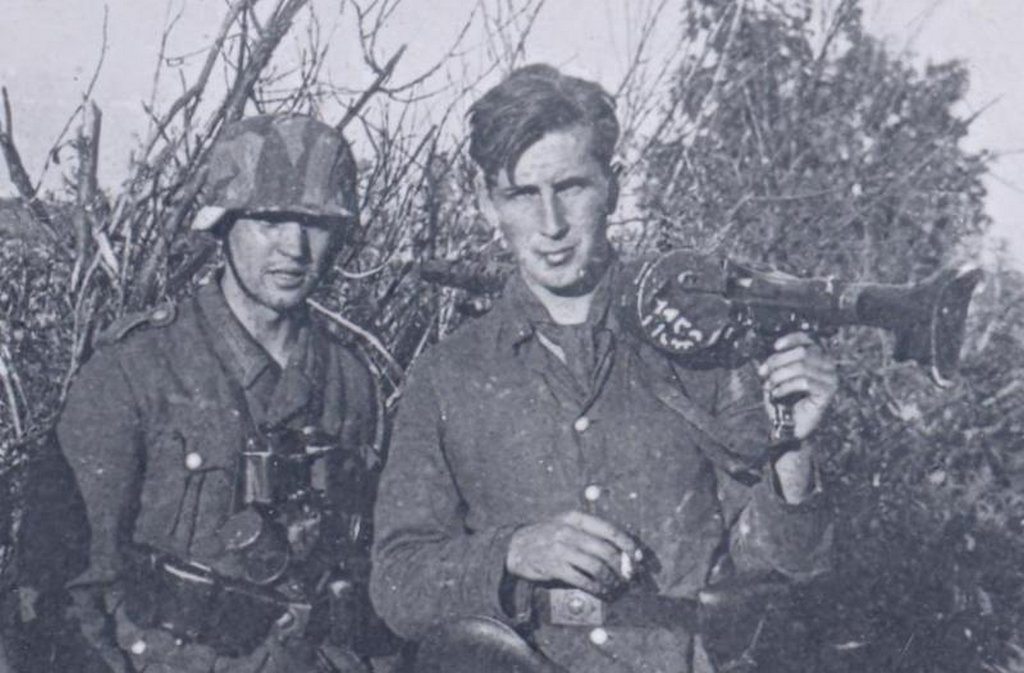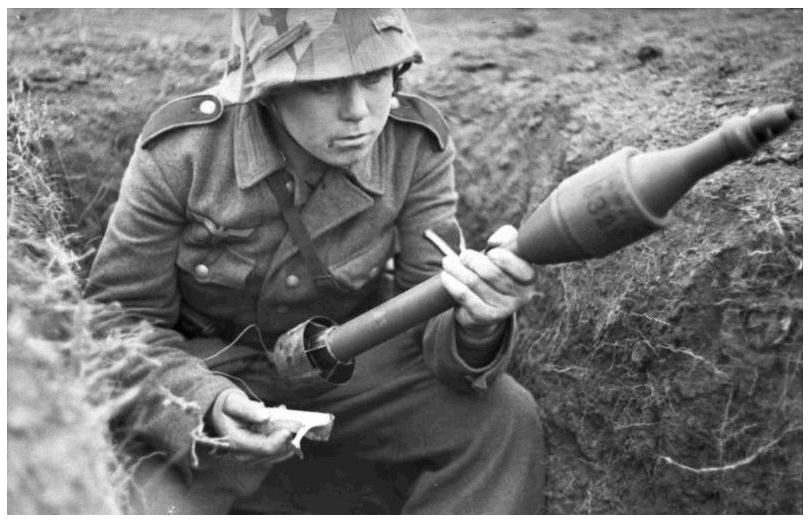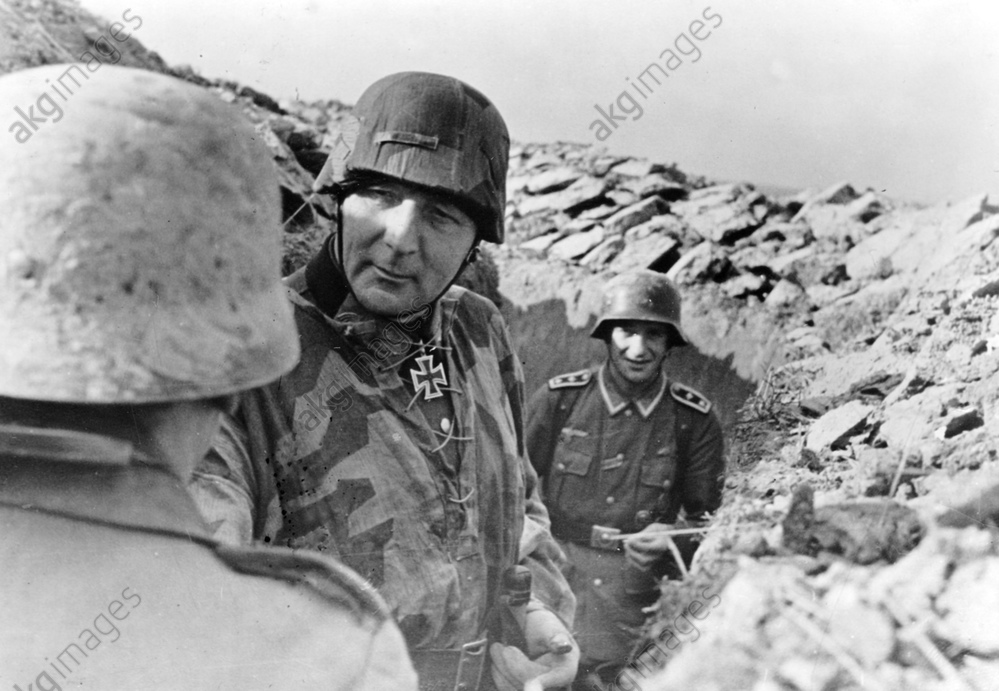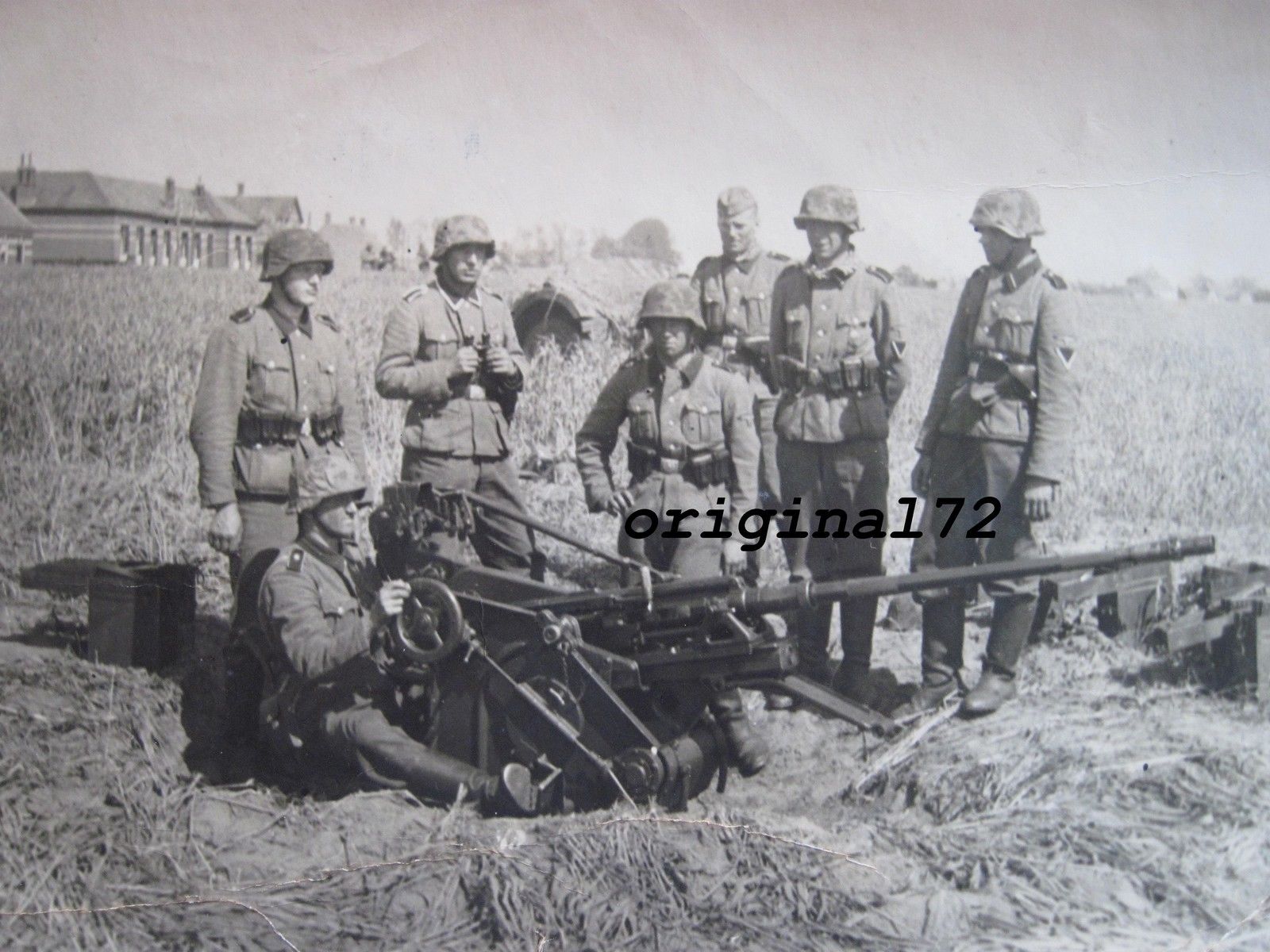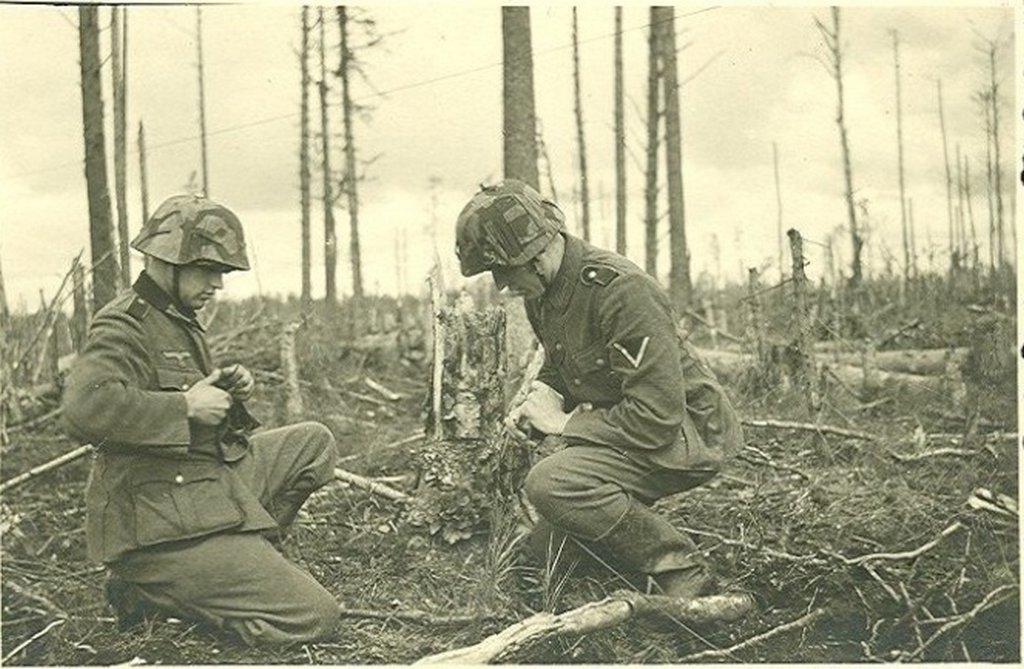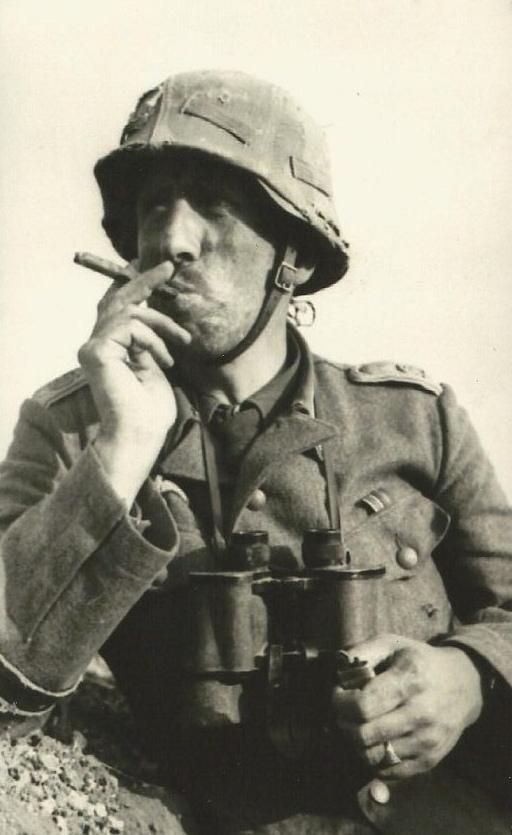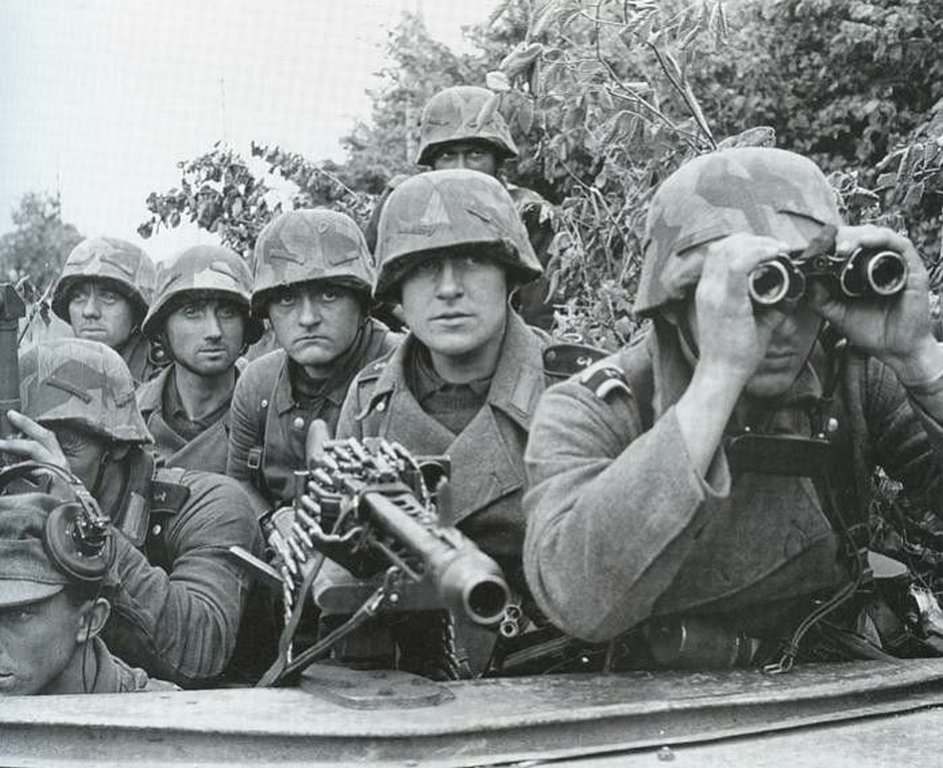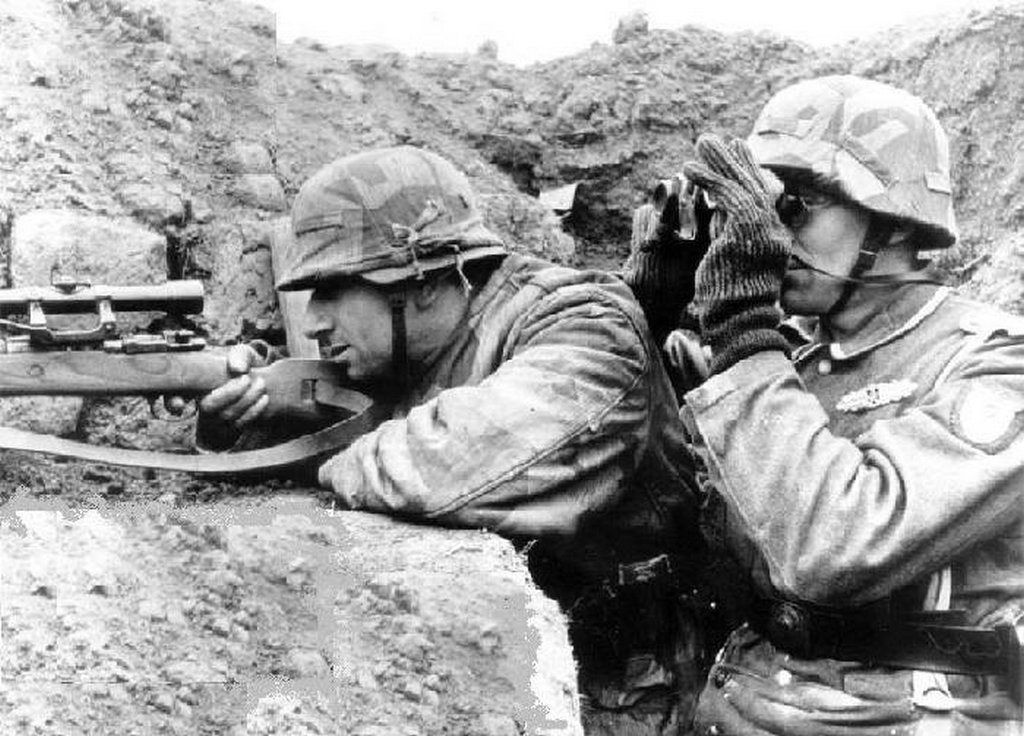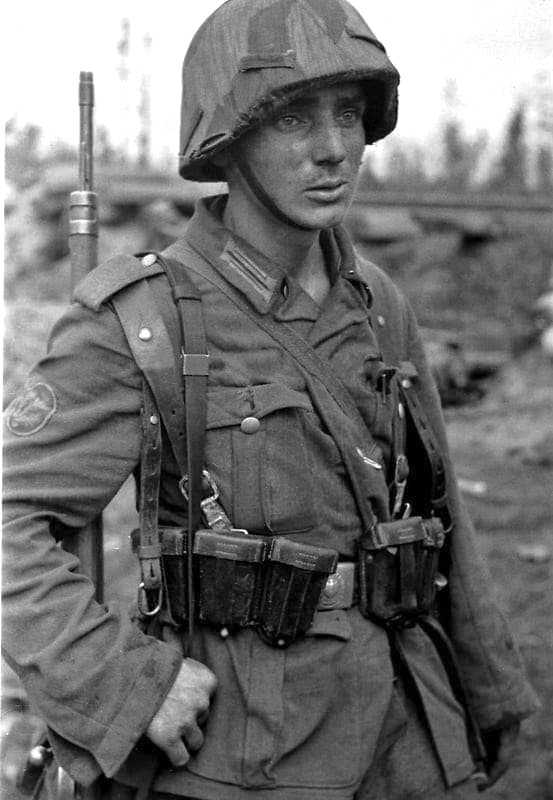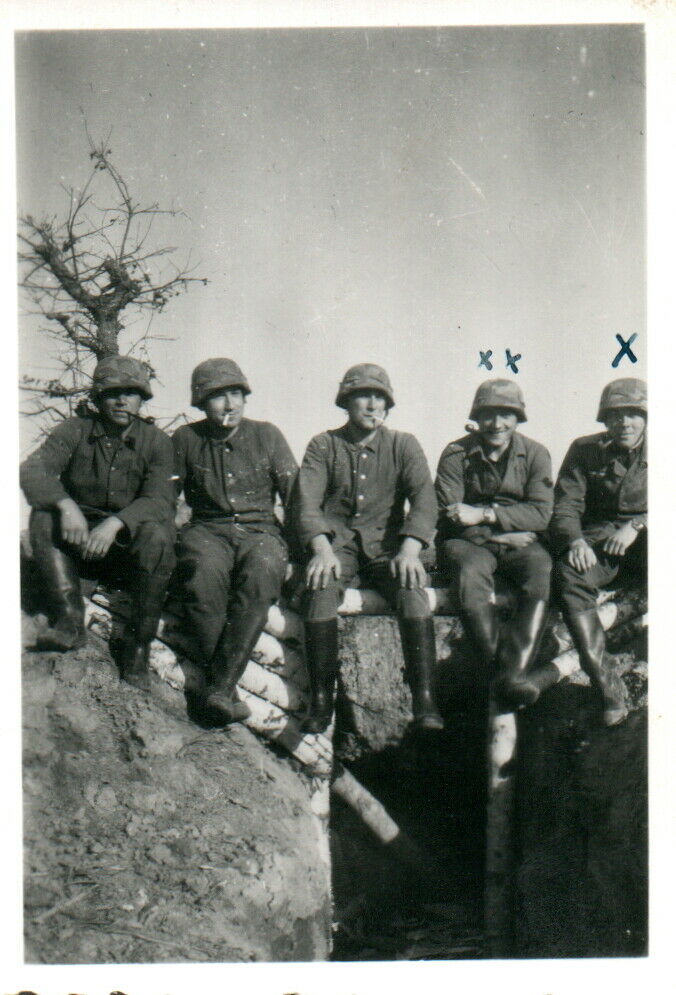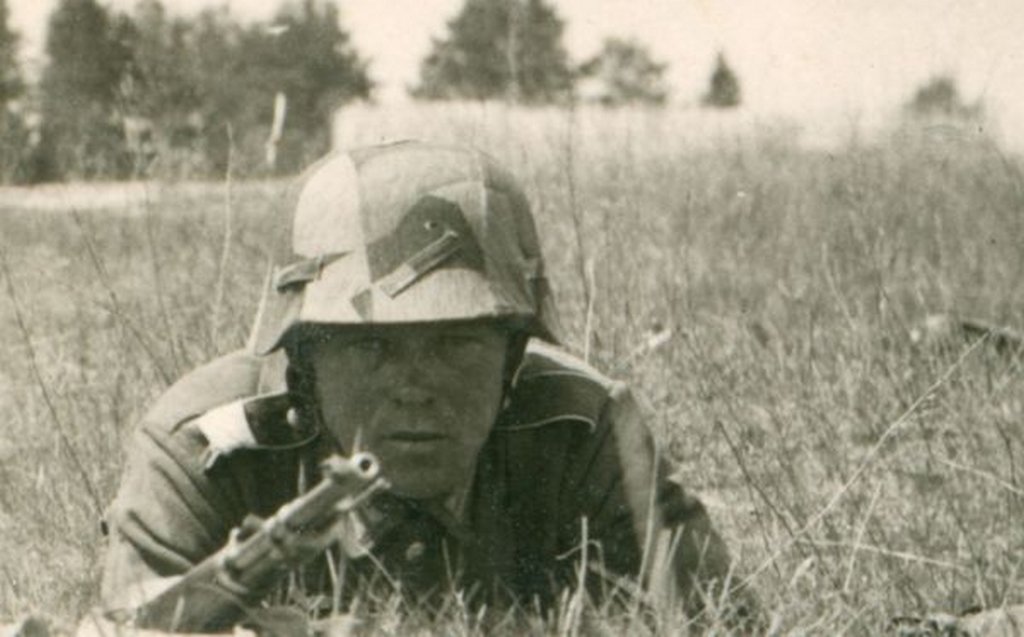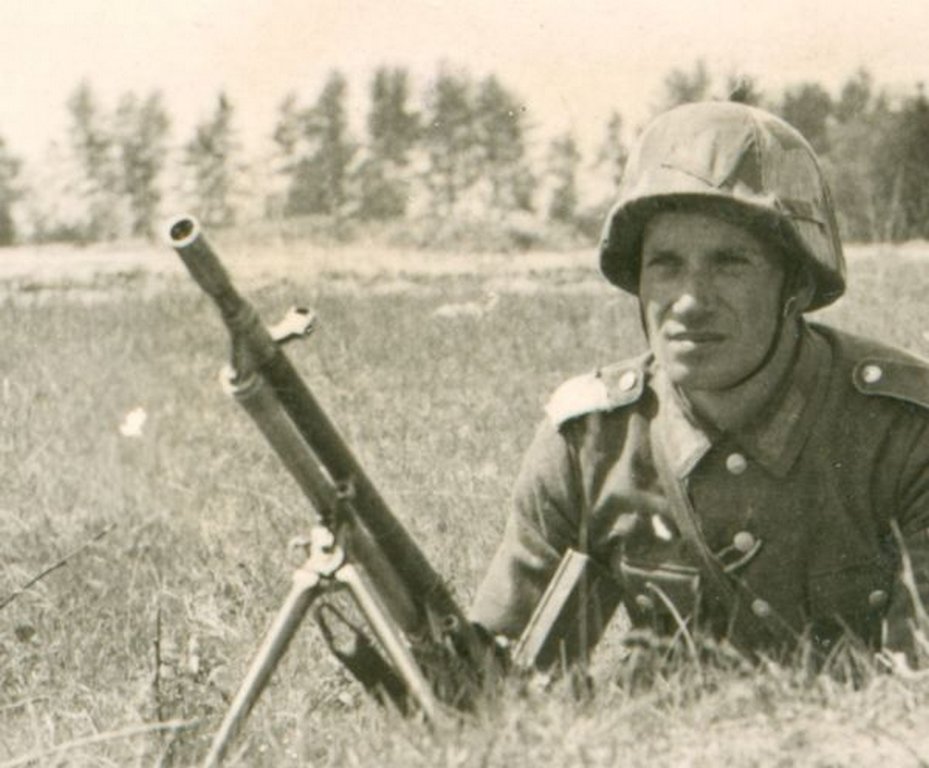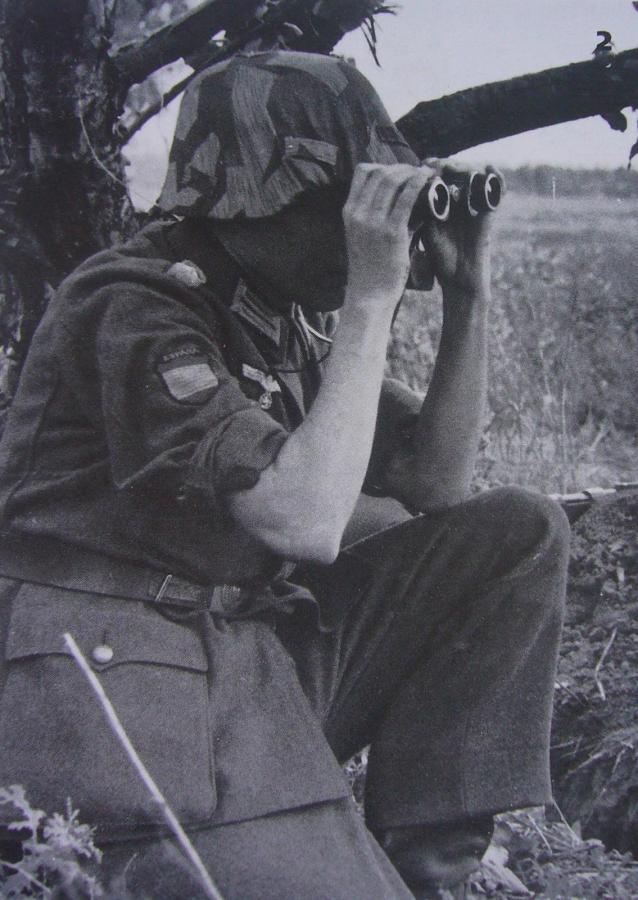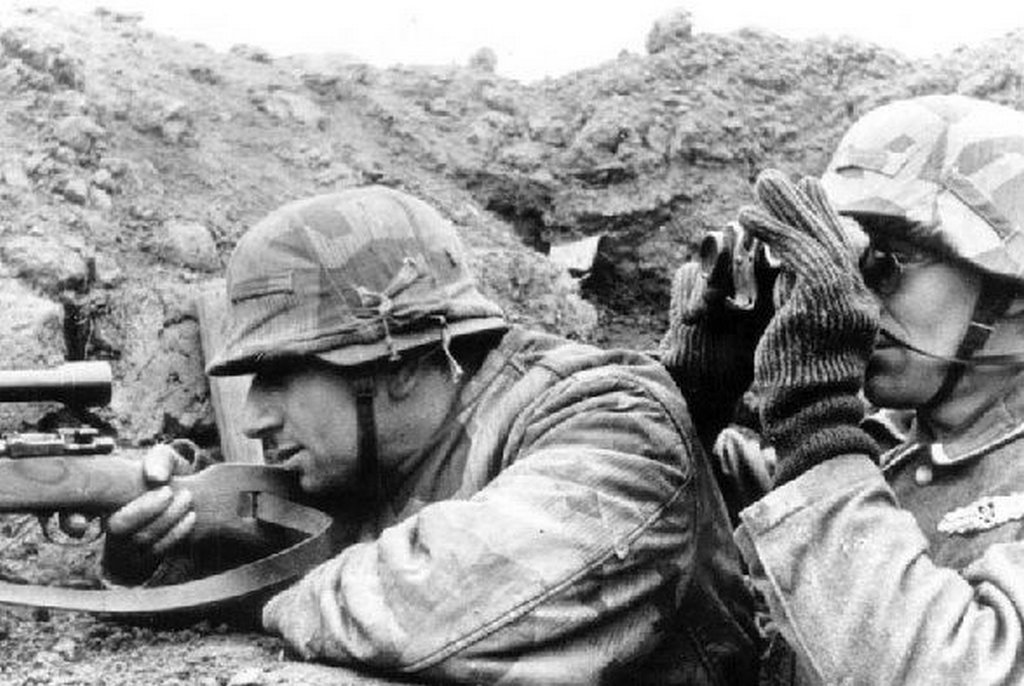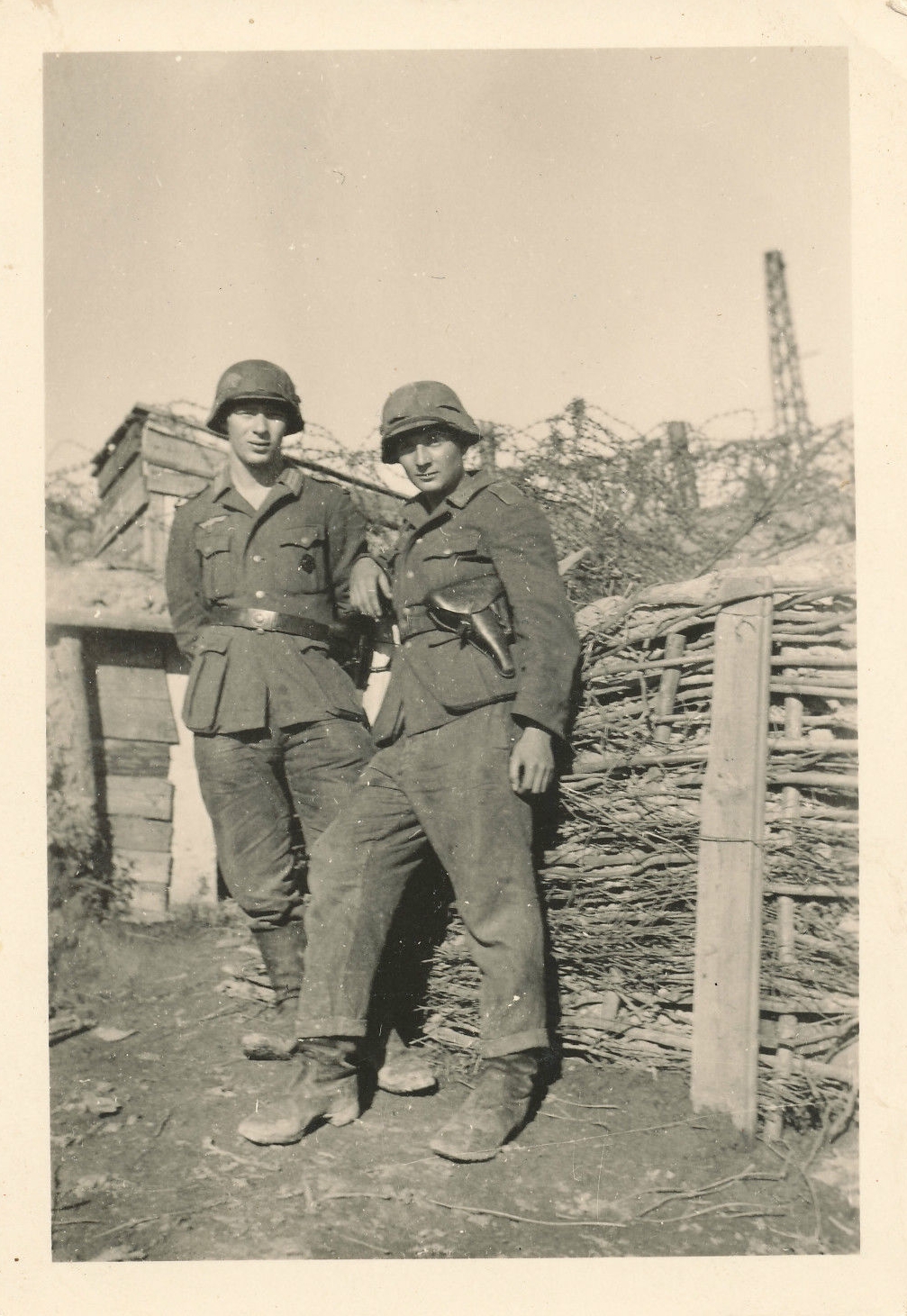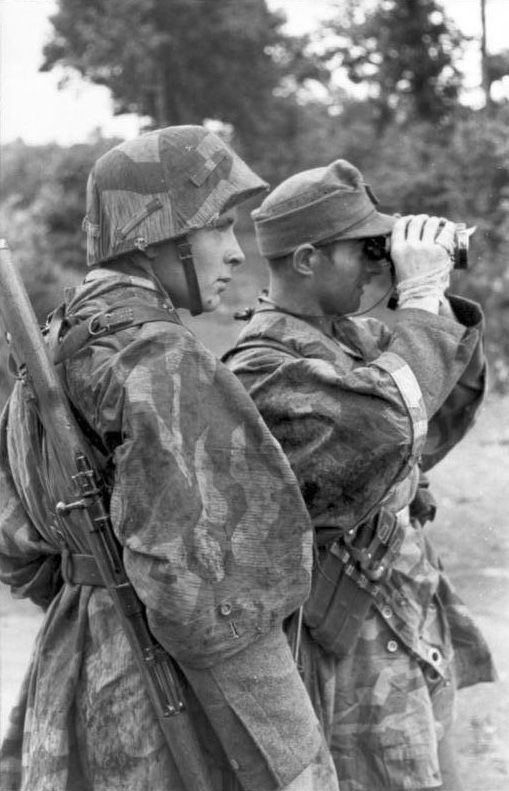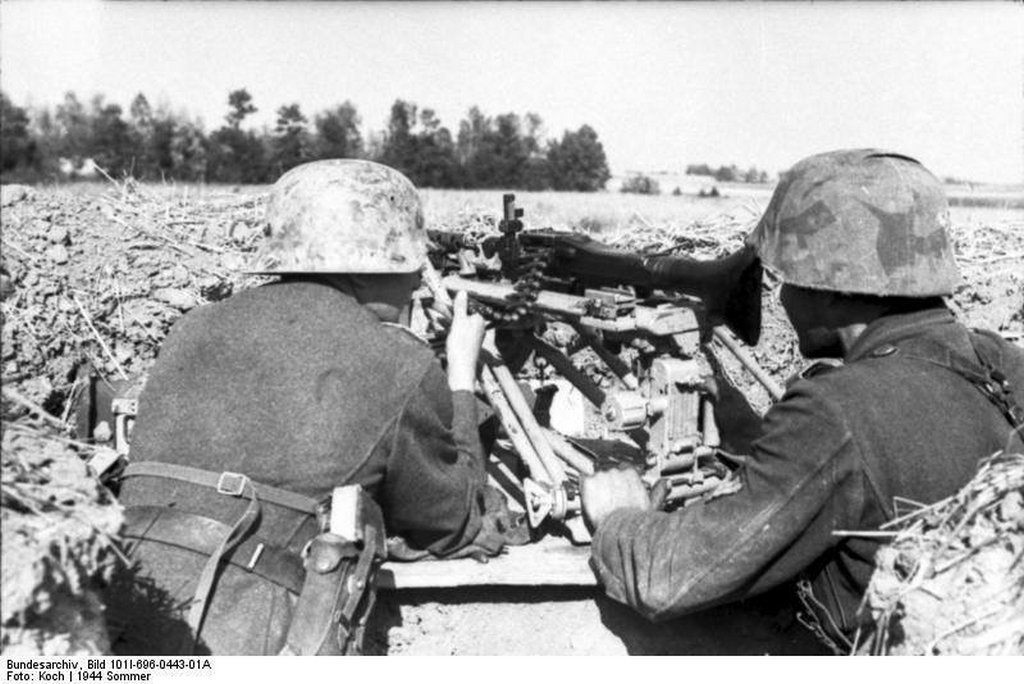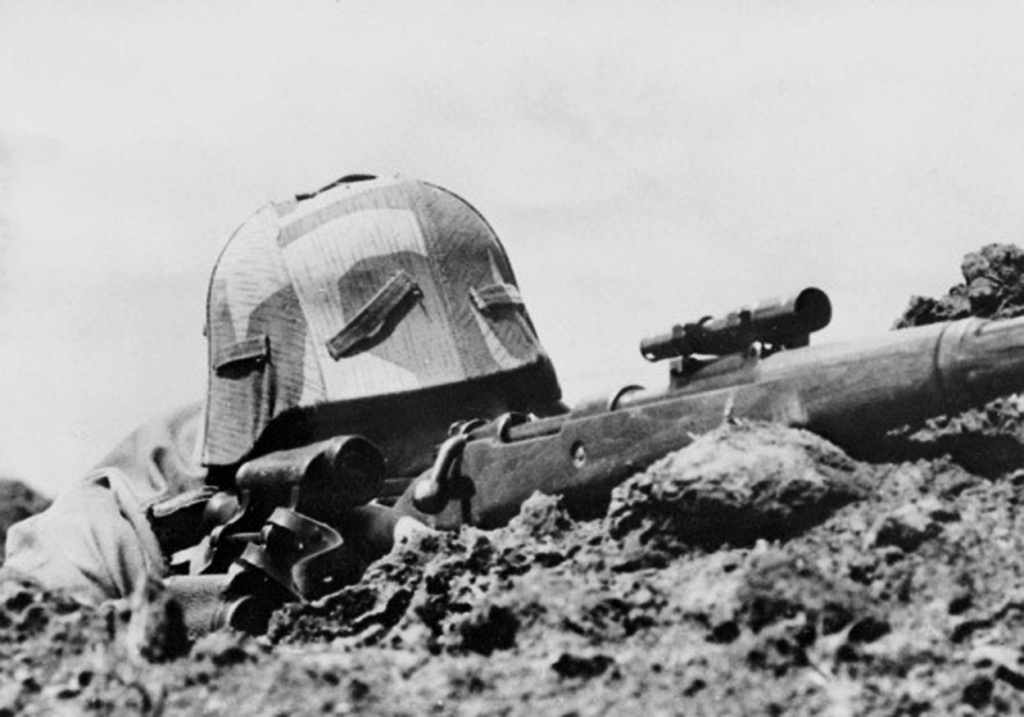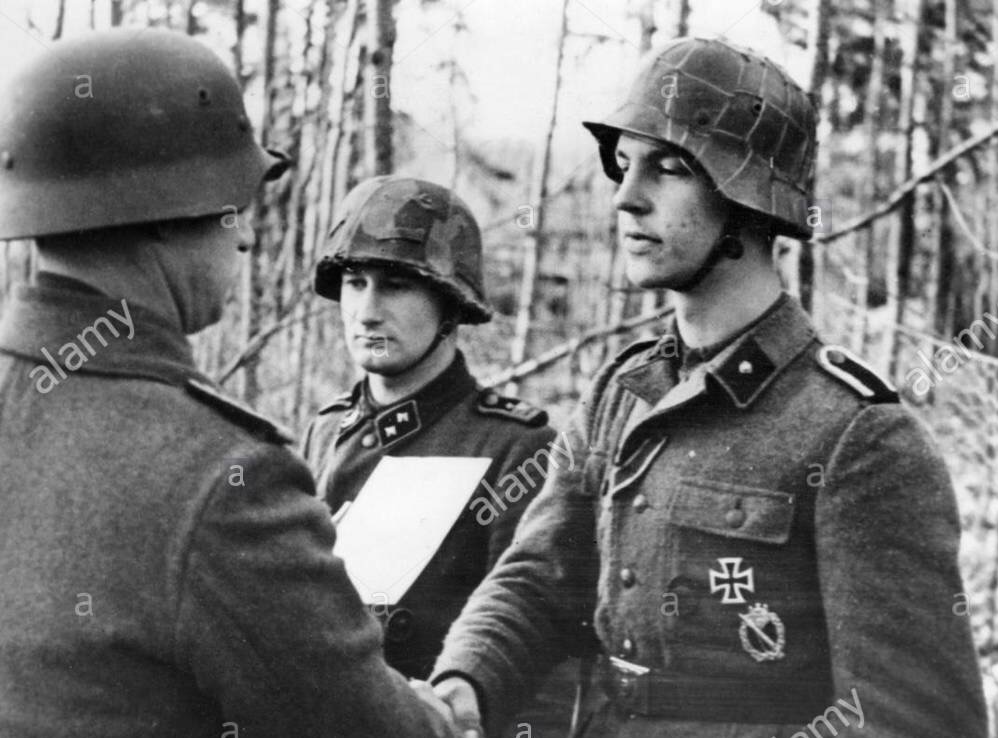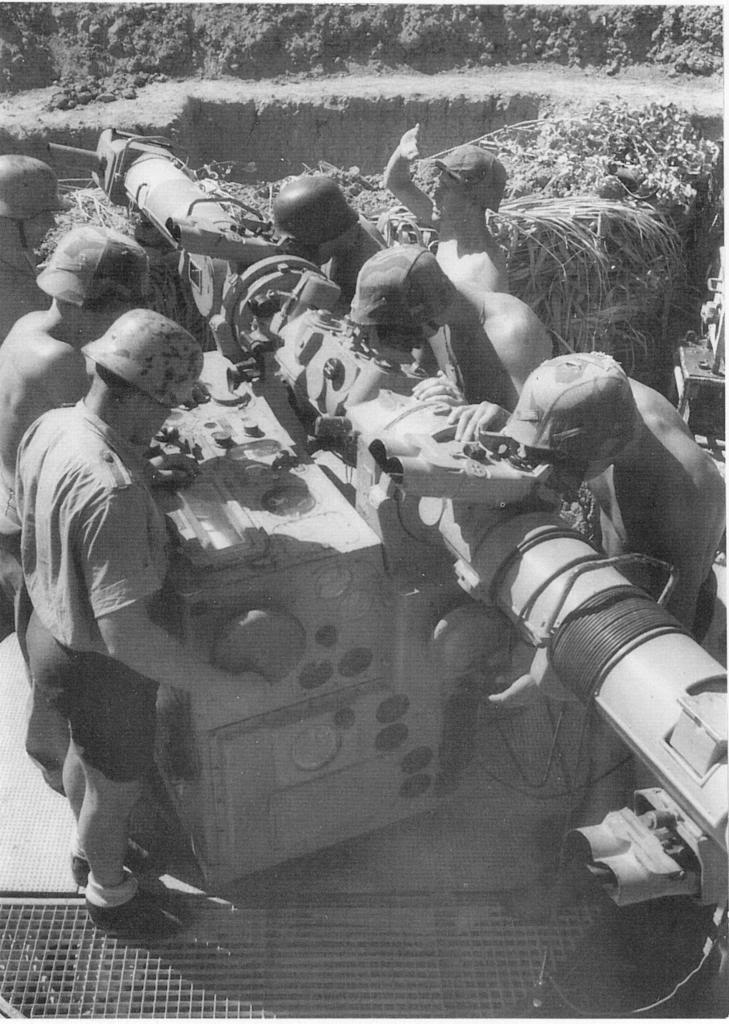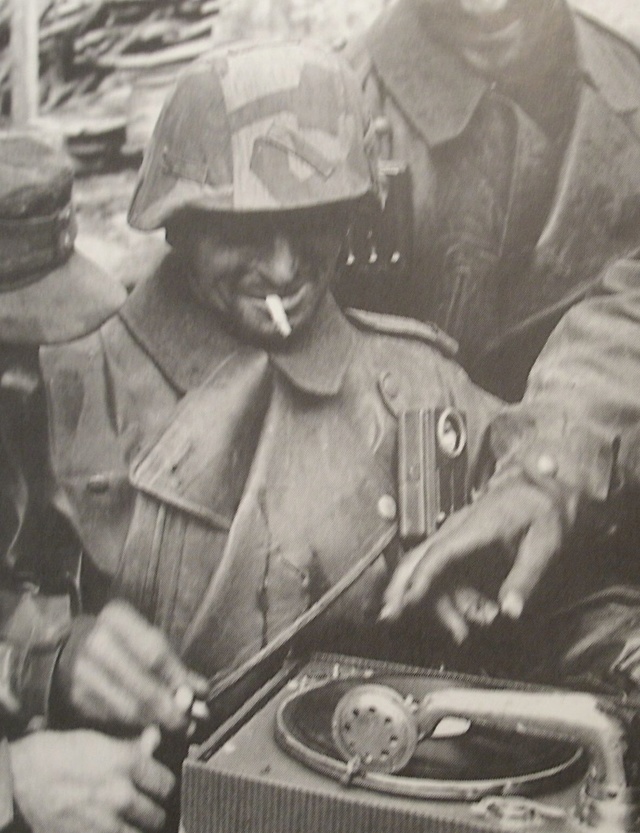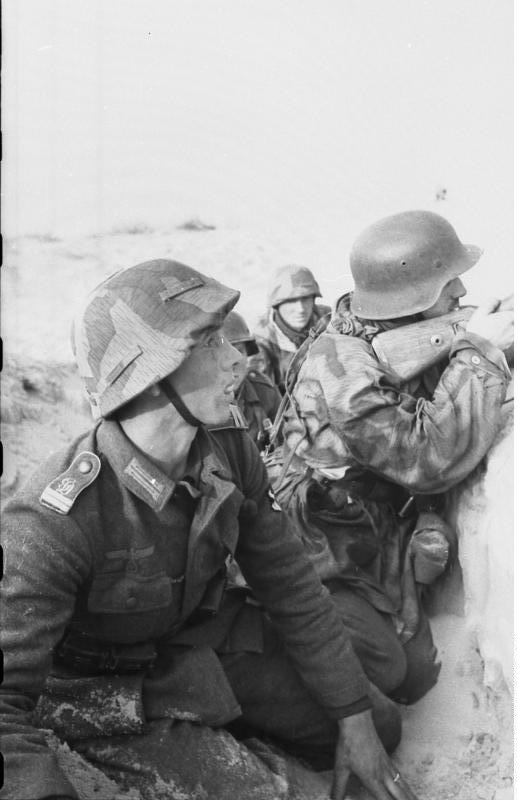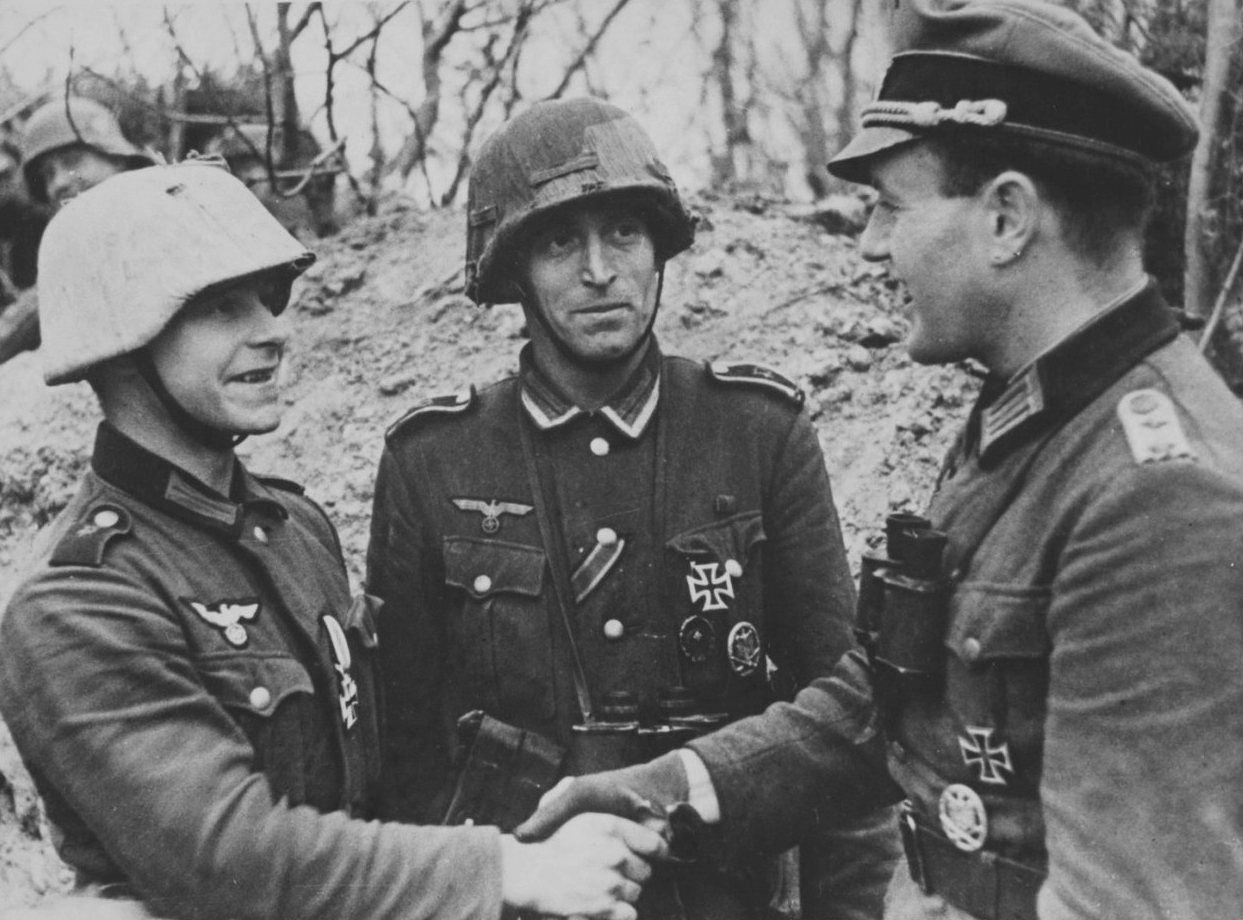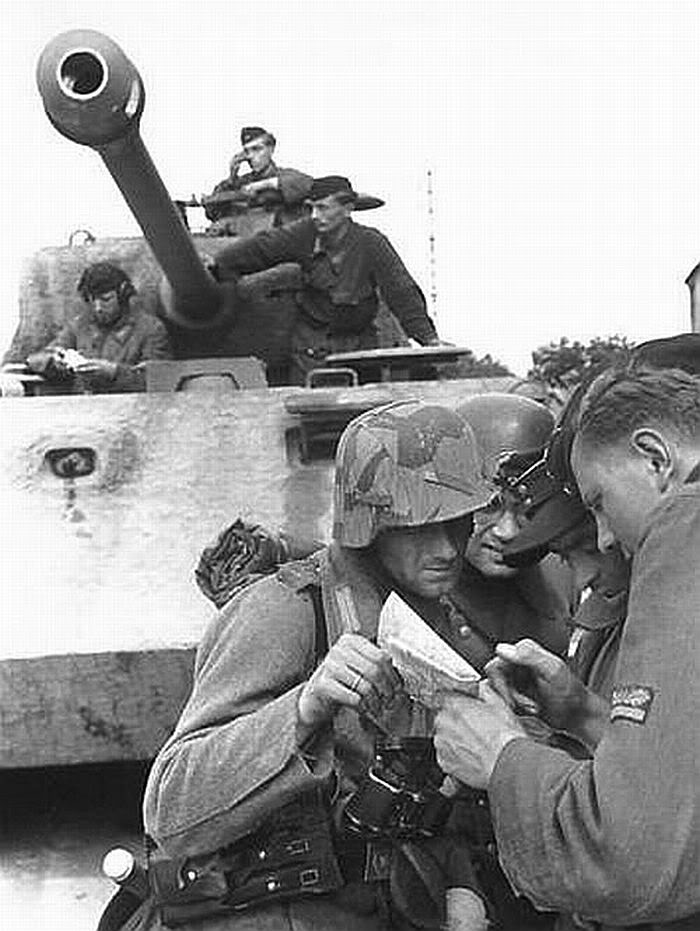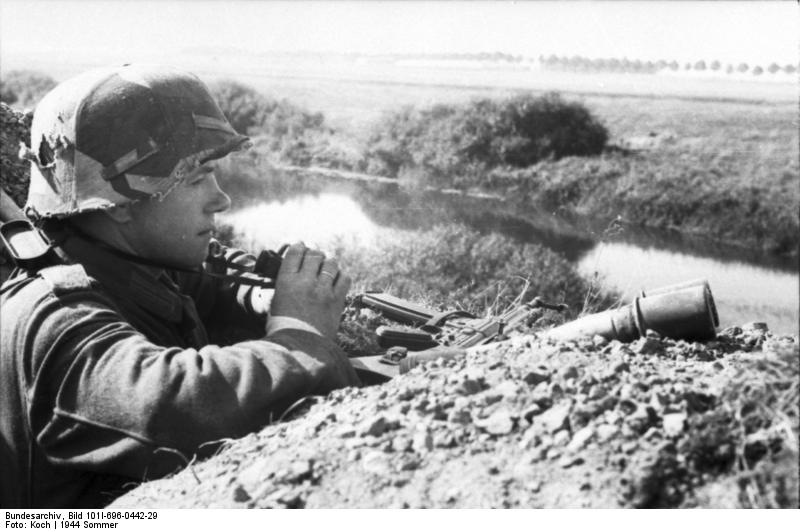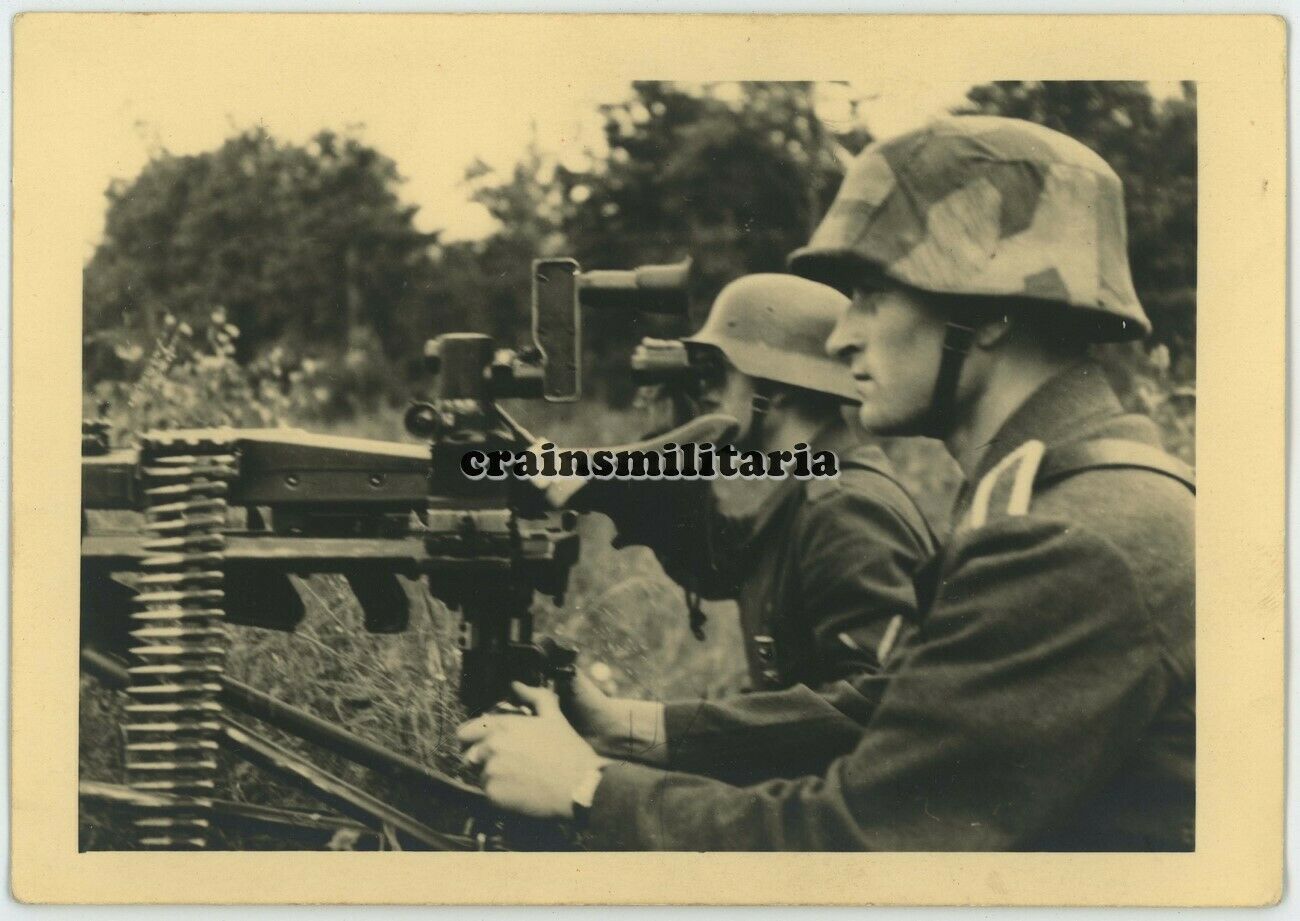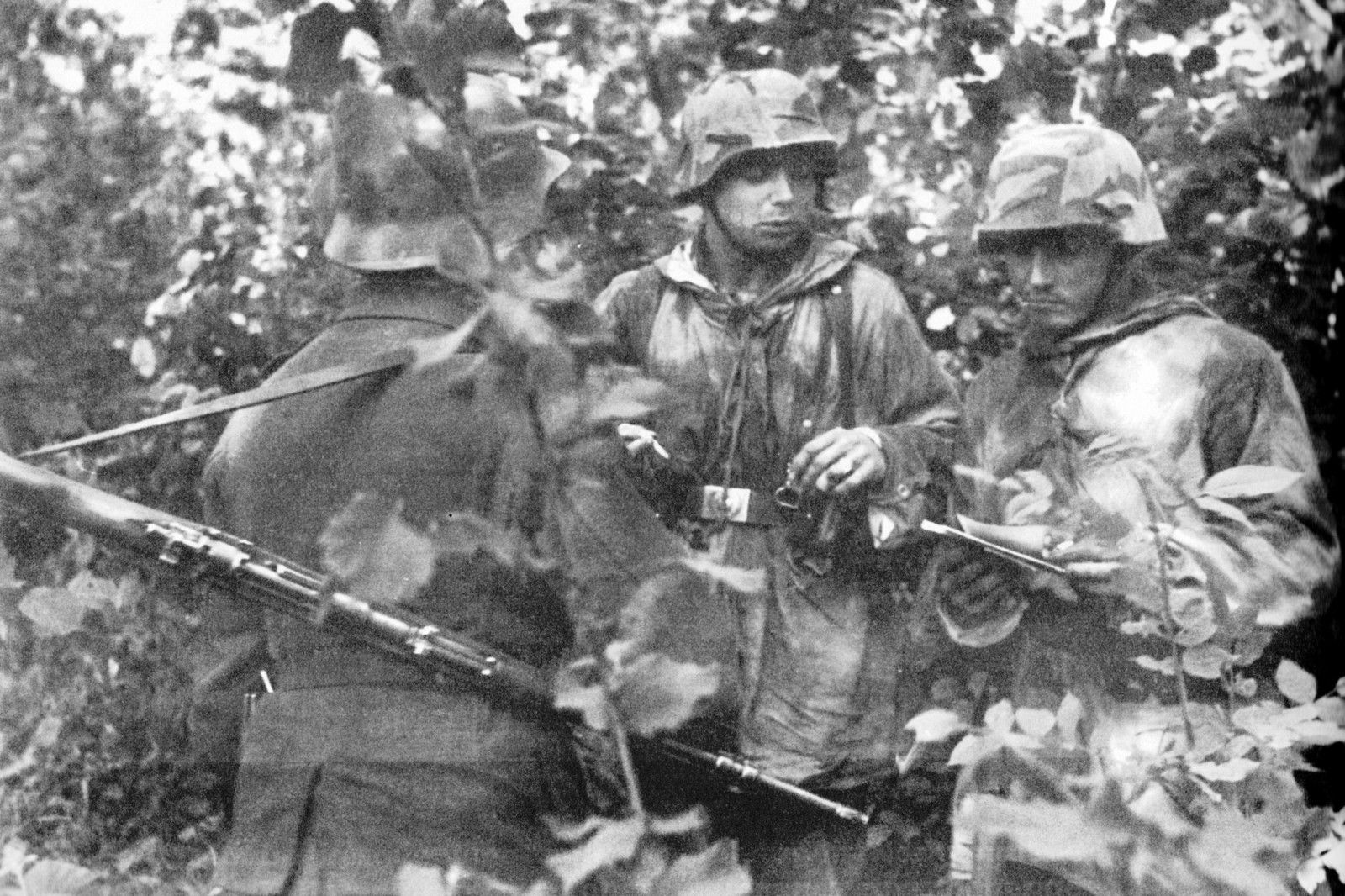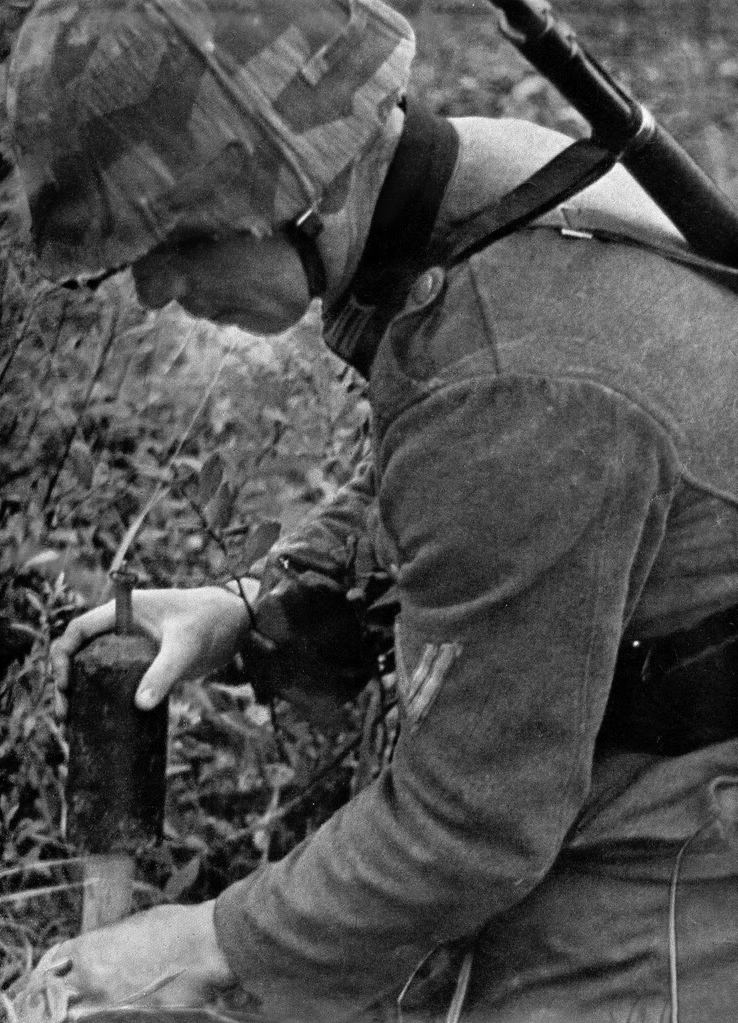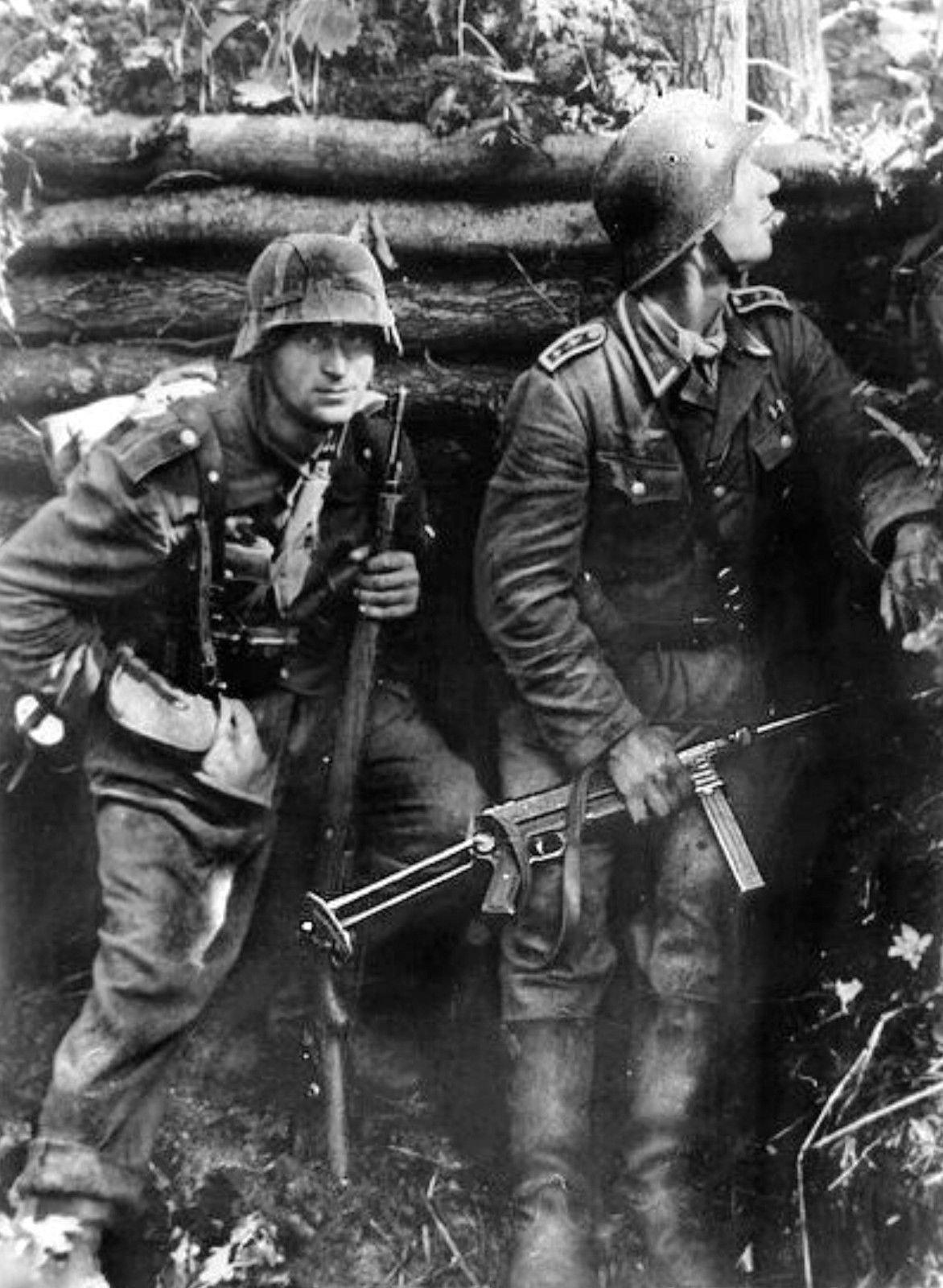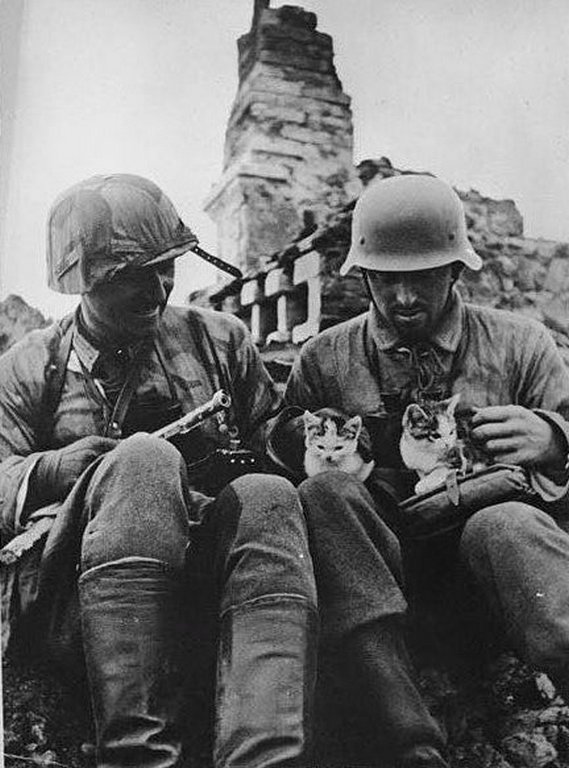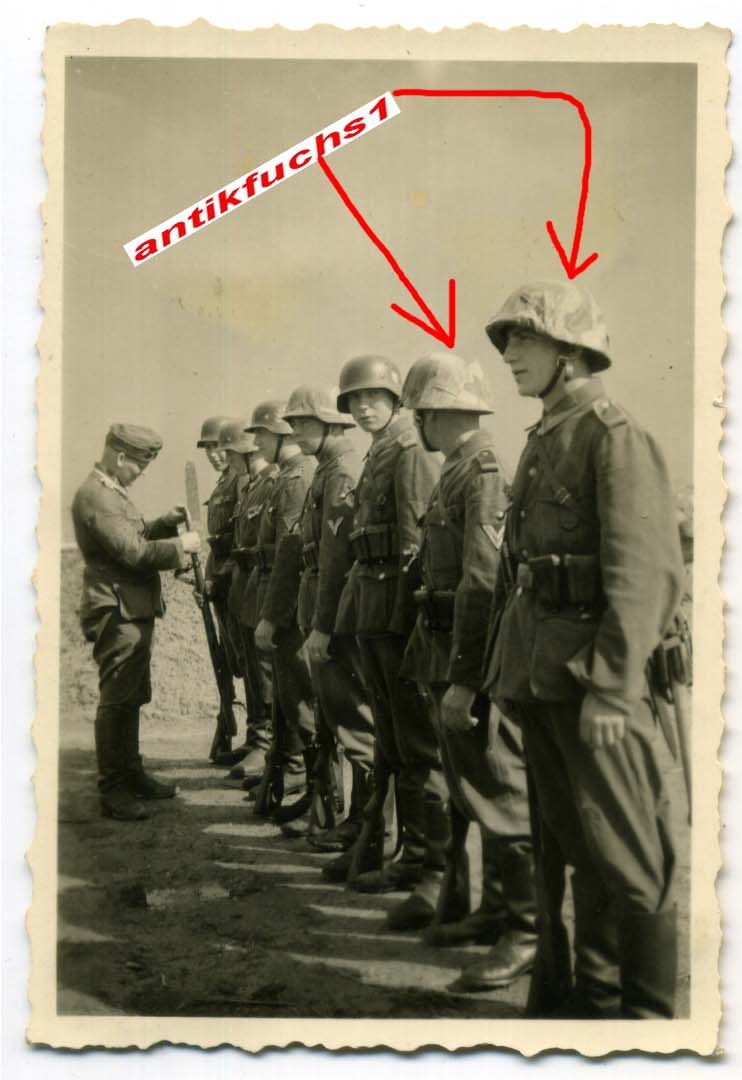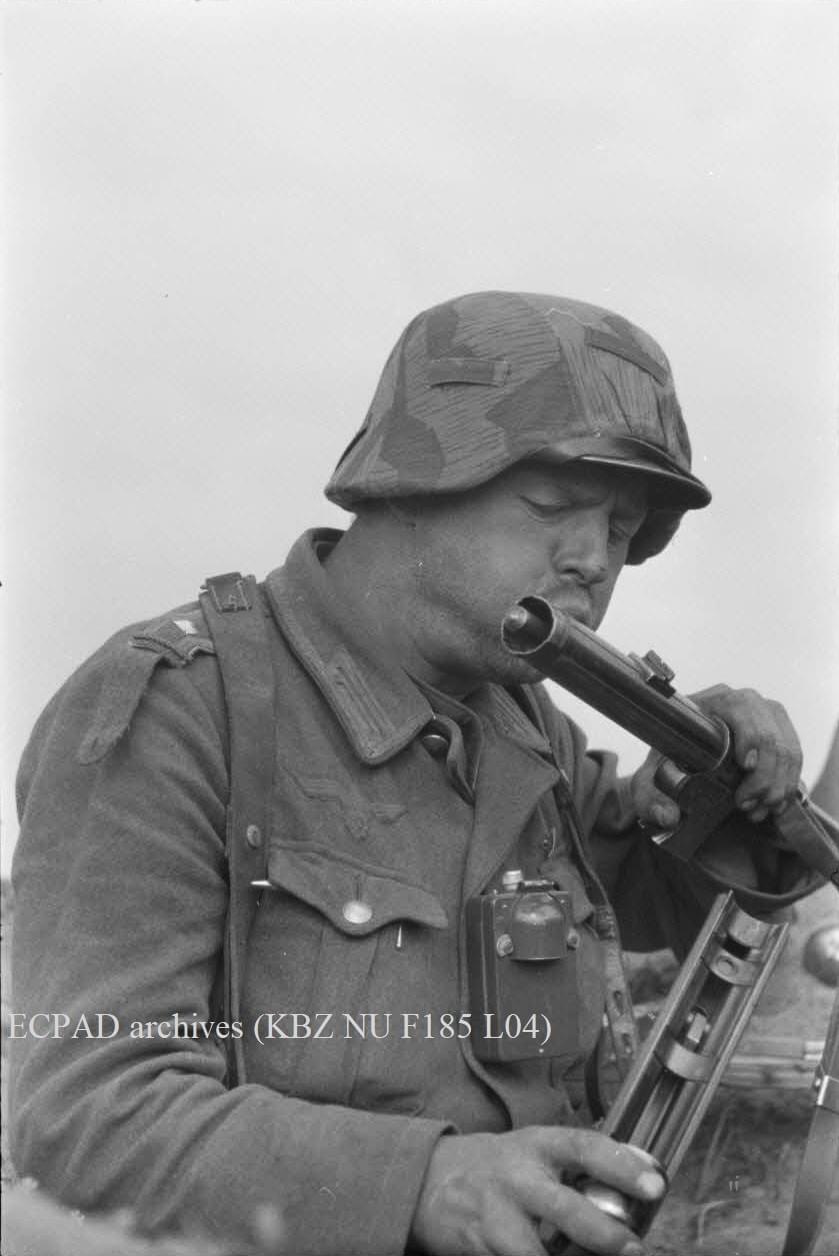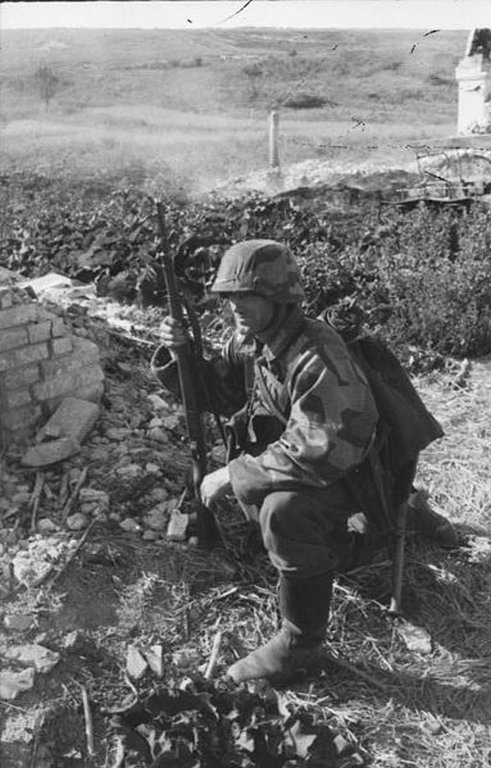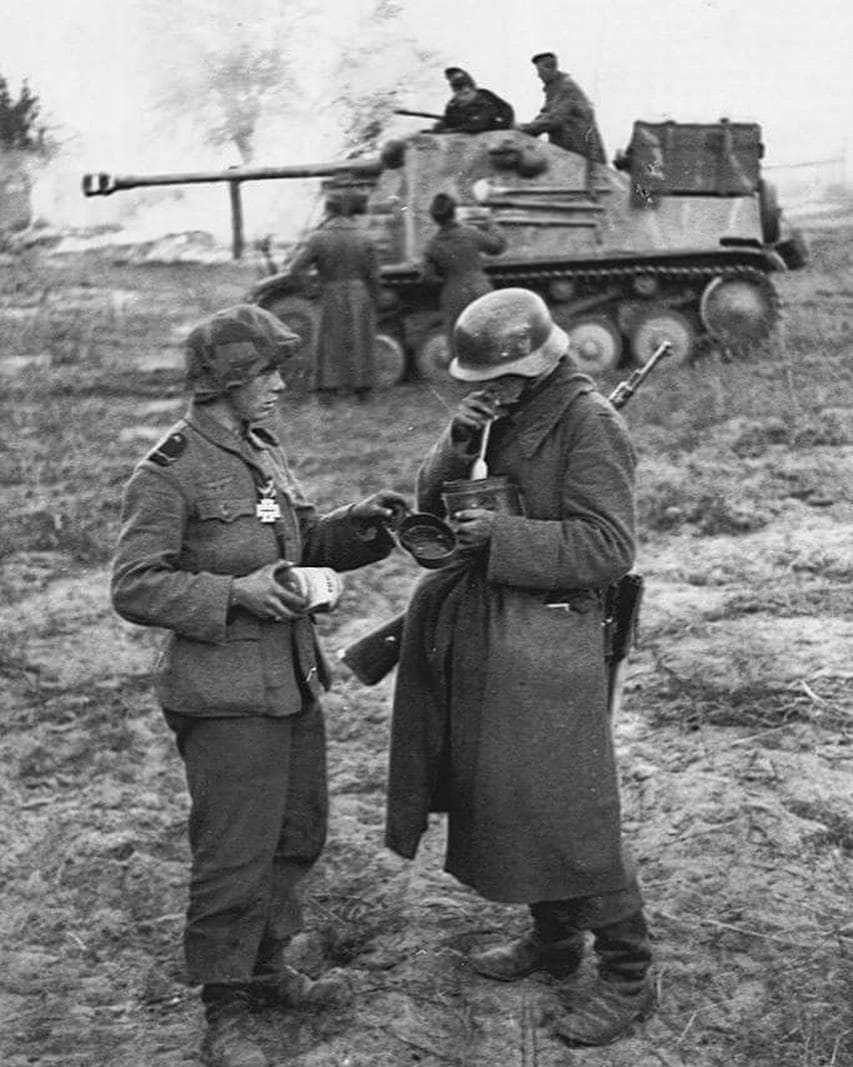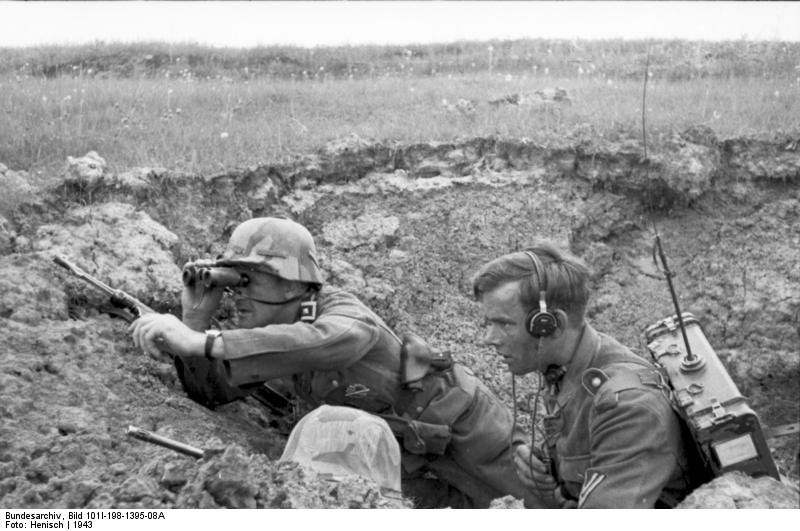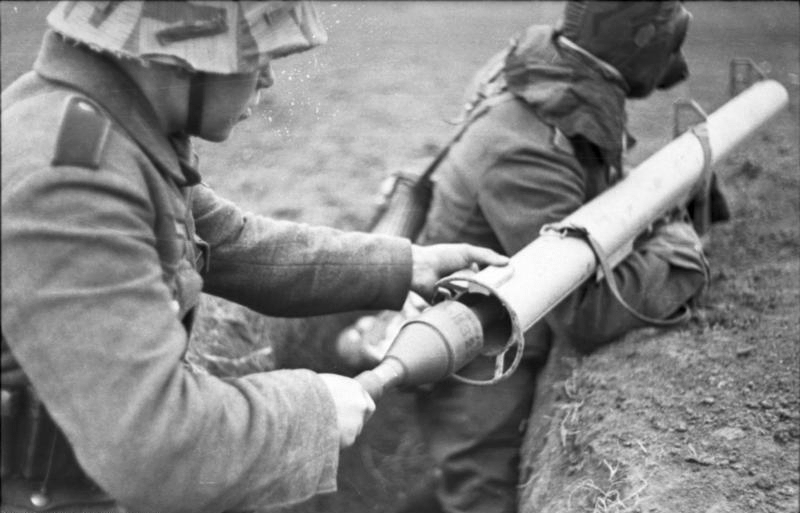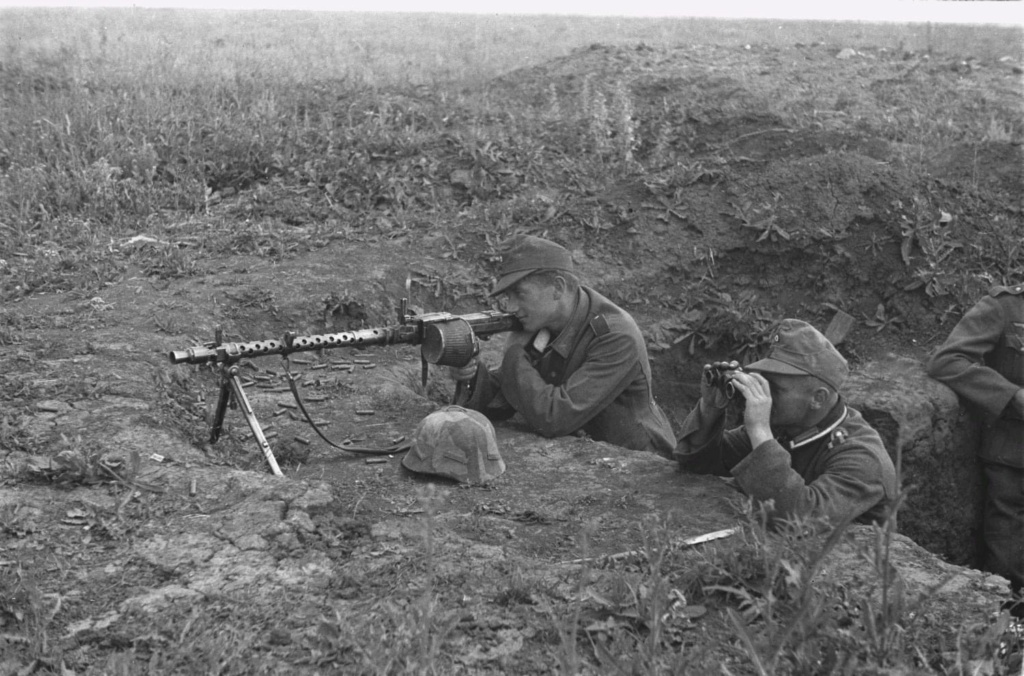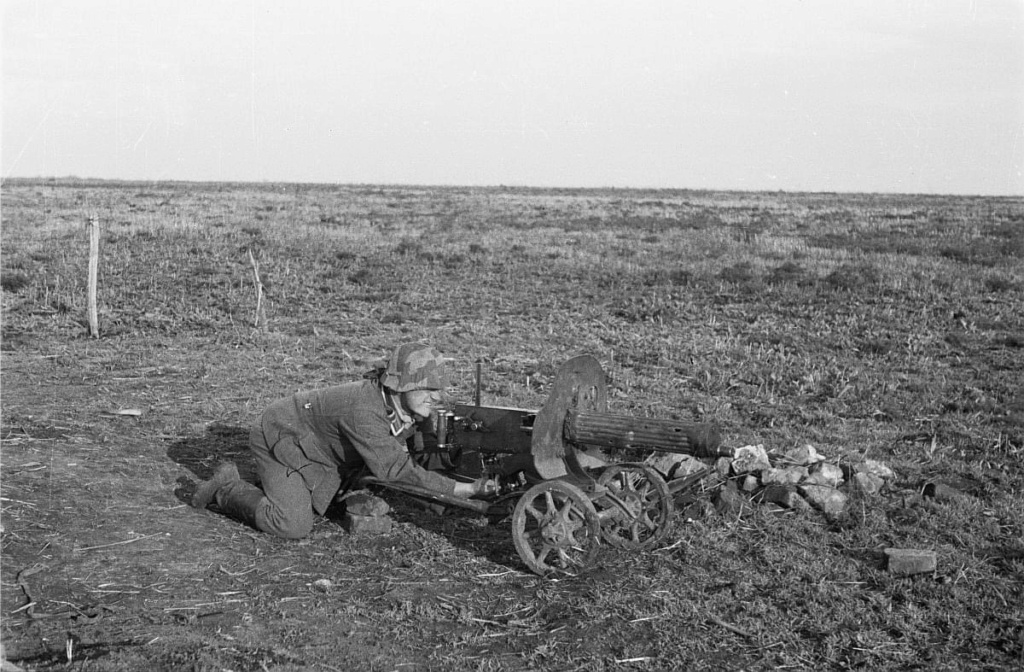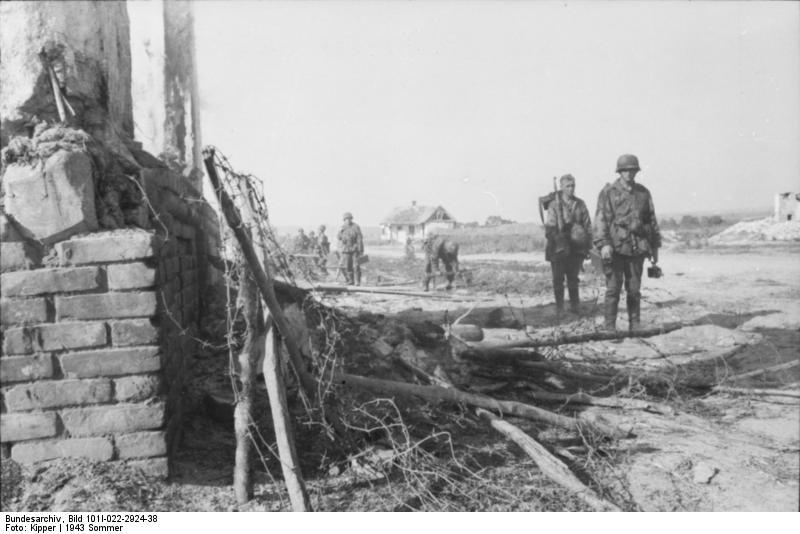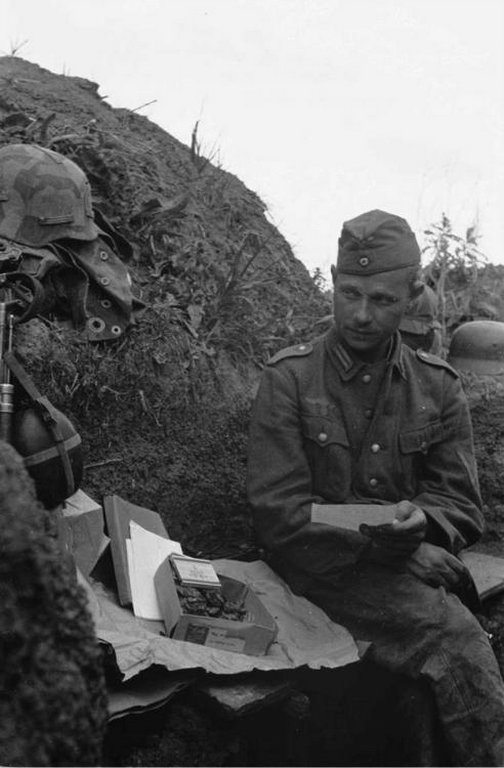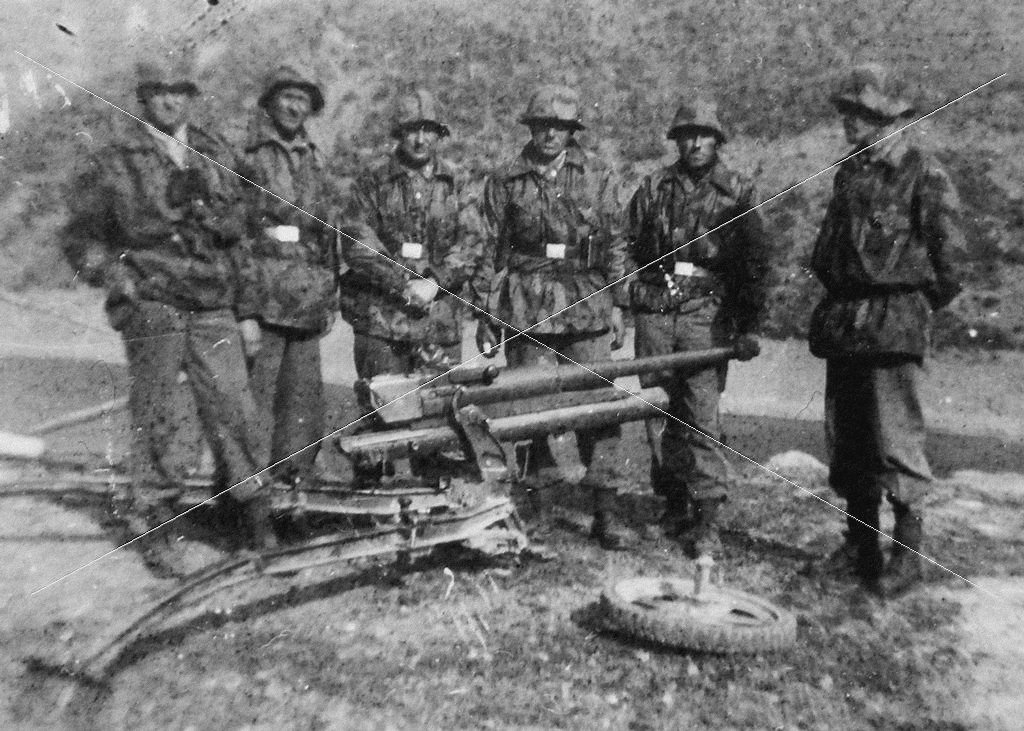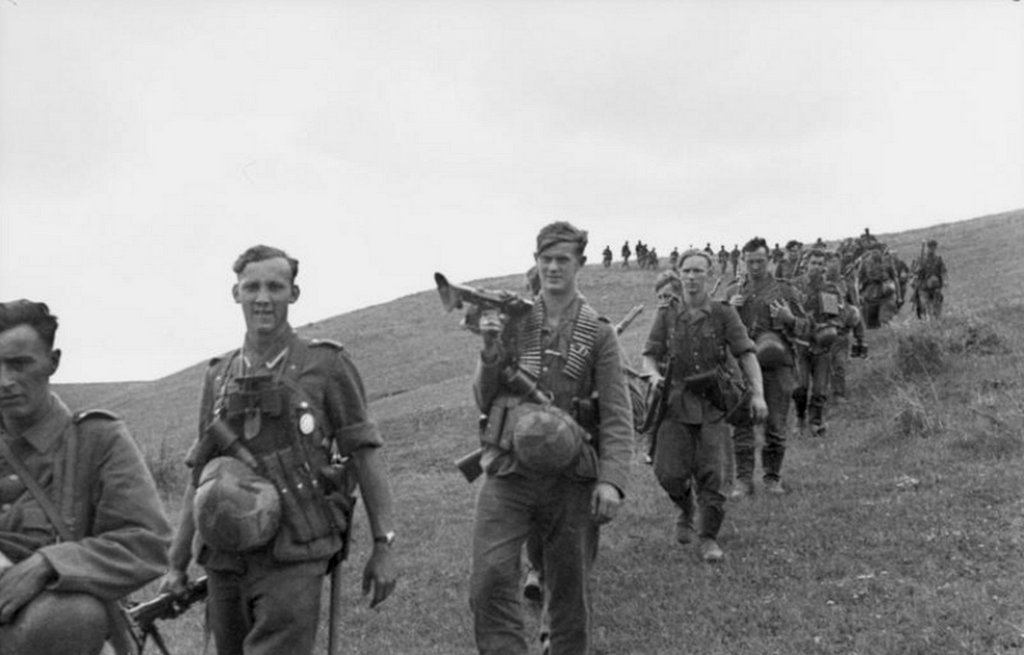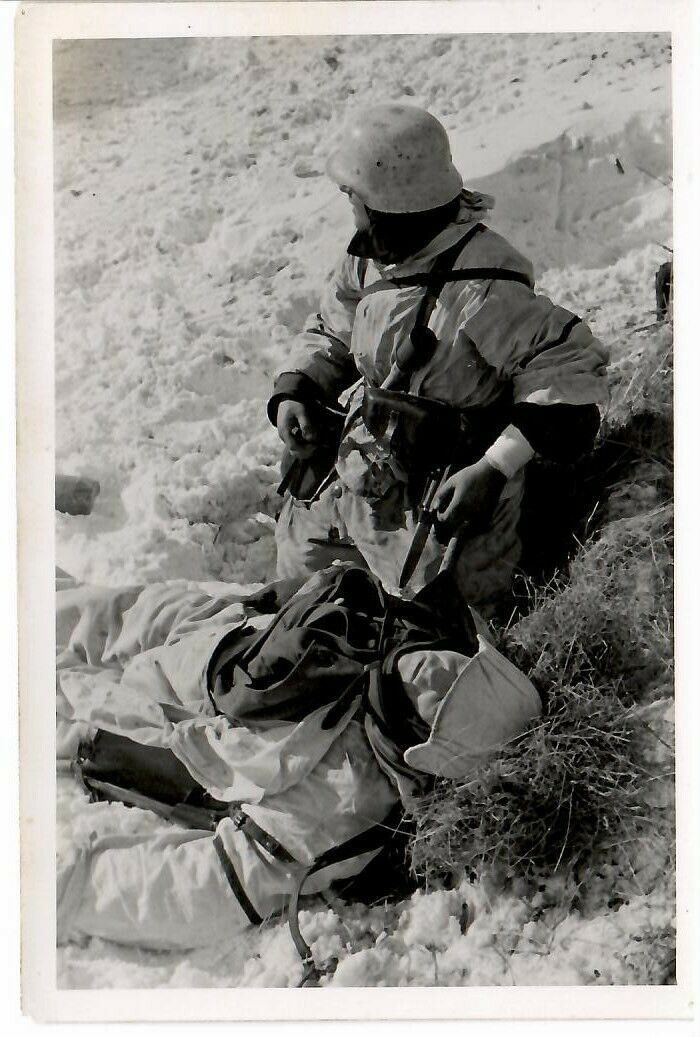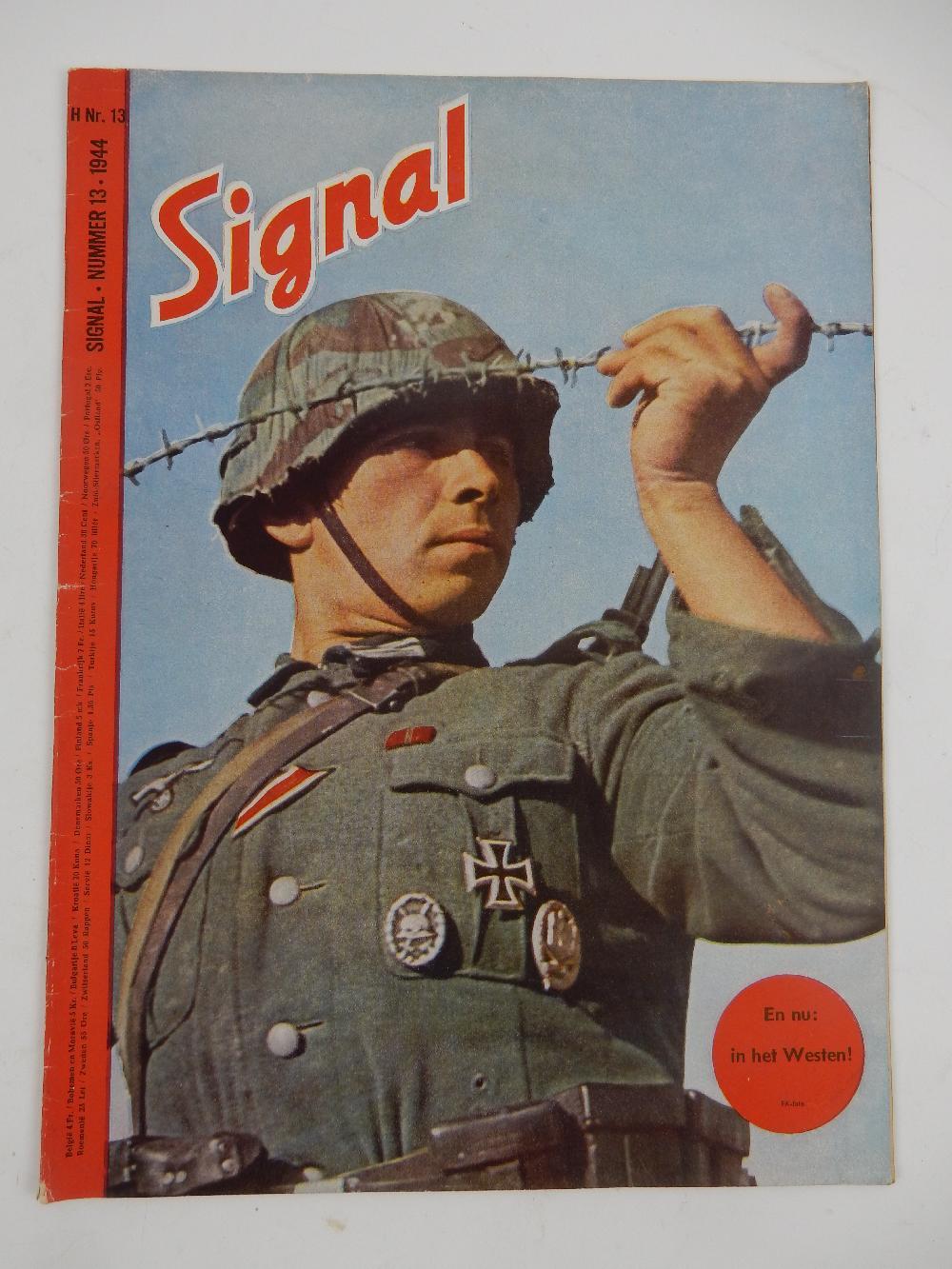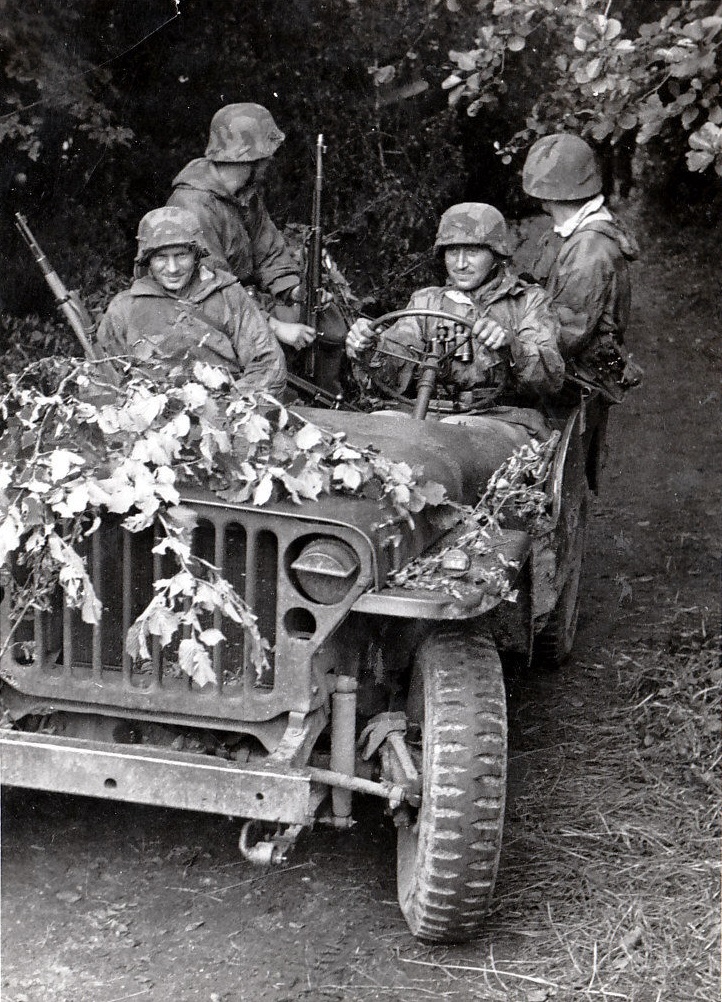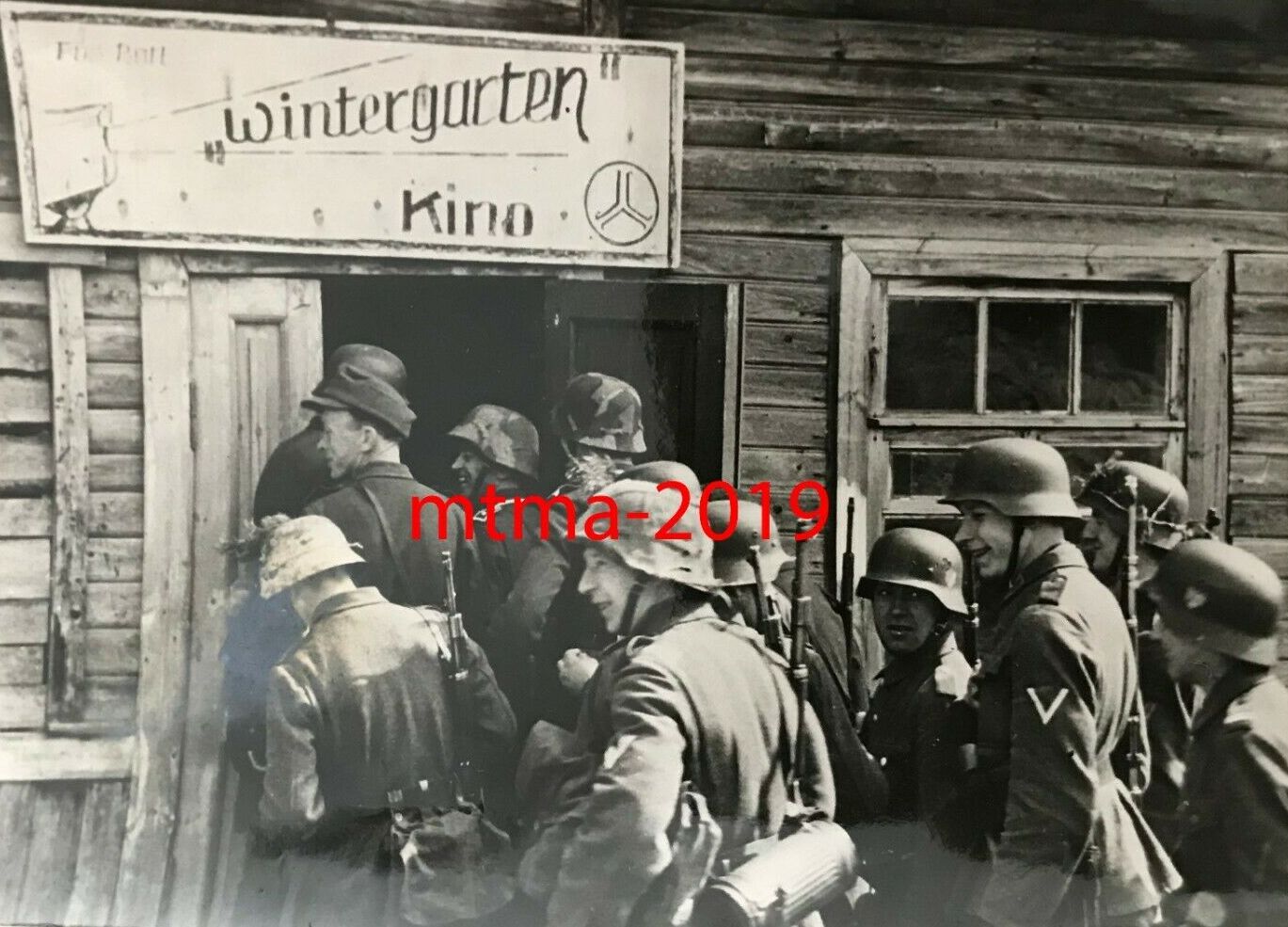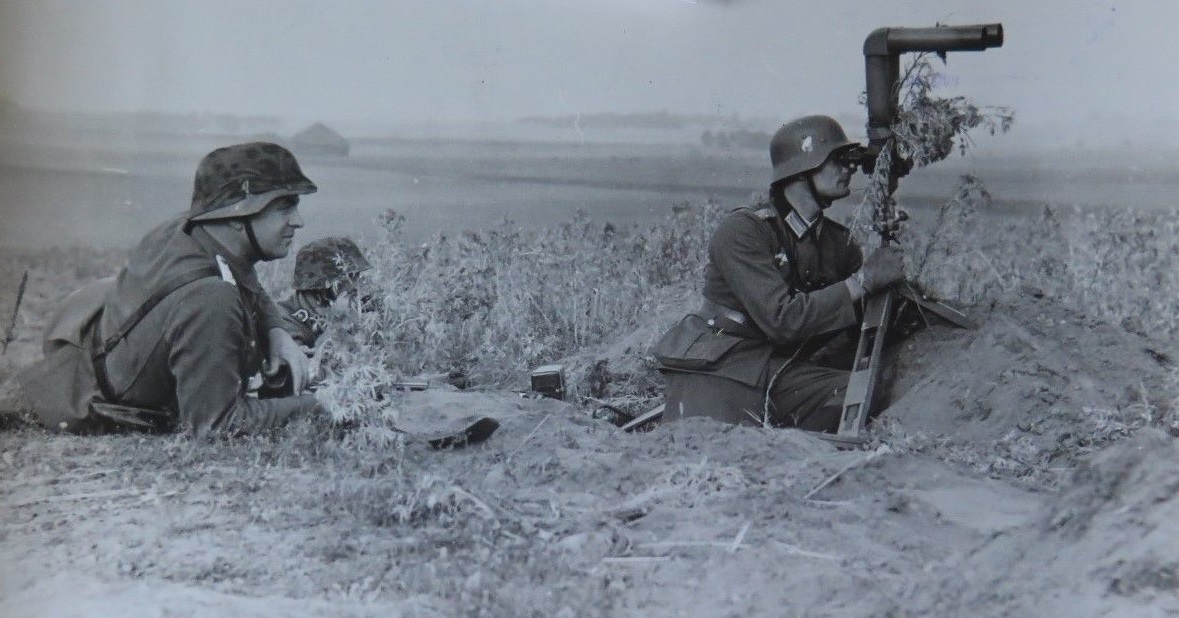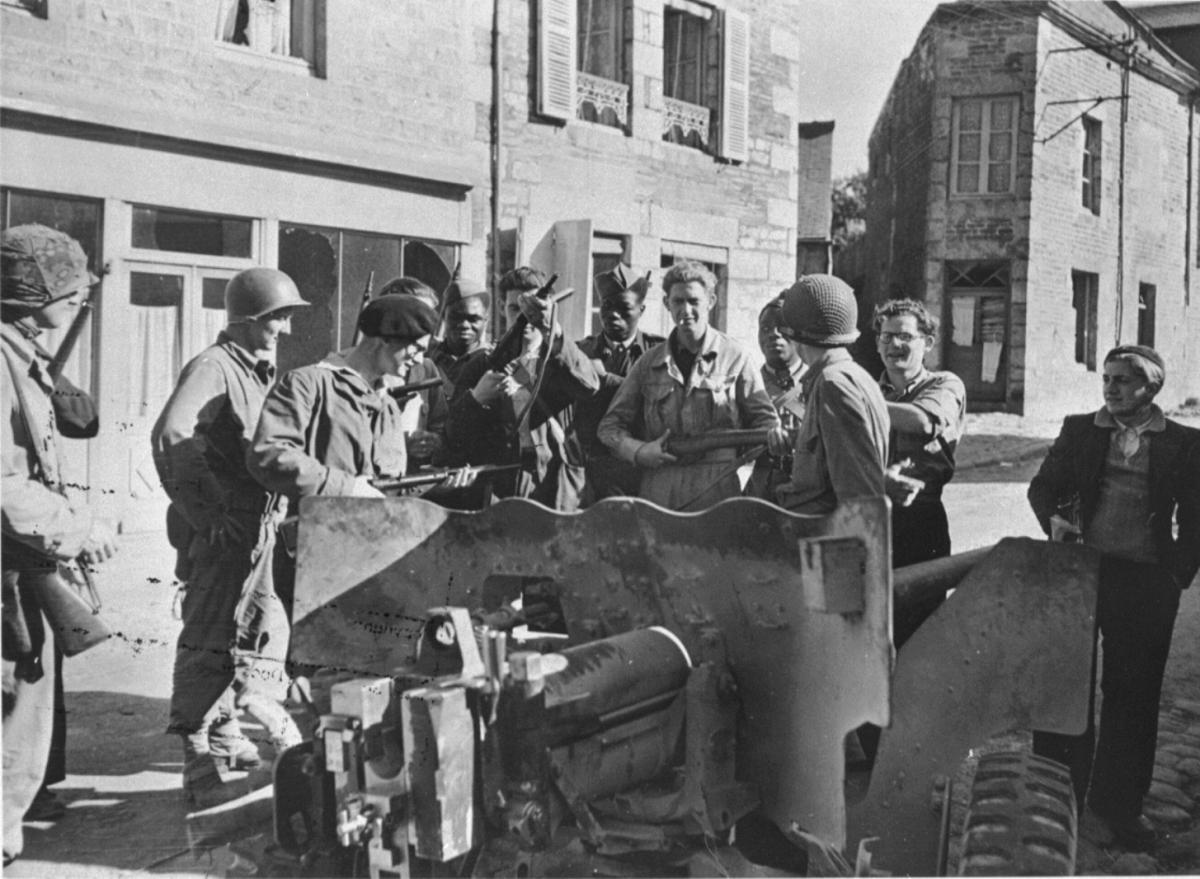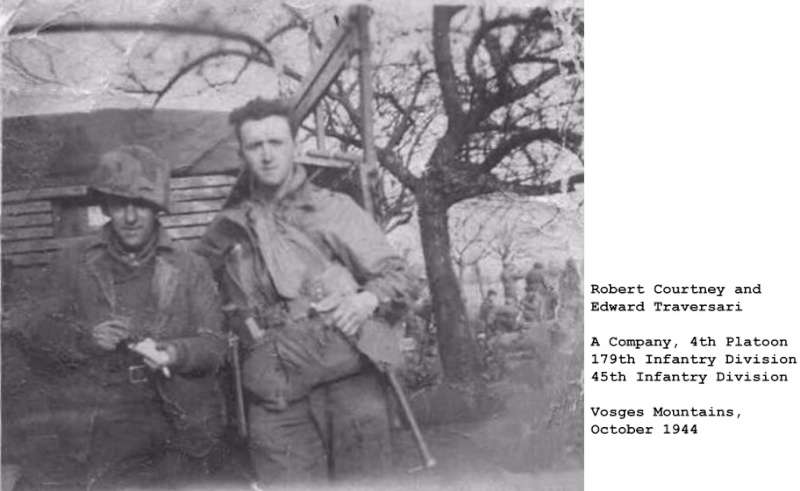Wehrmacht Helmet Covers
4. Photos on the field.
As a preamble,
I'd like to thank collectors and sales sites in advance for the use of
the images (without necessarily having asked their permission, and I
hope they'll excuse me), as well as the various aids provided by
passionate collectors.
General
The camouflage effect of the M31 zeltbahn (or individual tent) was enhanced by the manufacture and supply of helmet covers (Tarnhelmüberzug) for the army and air force (Heer & Luftwaffe). It was produced late (between 1942 and 1943), as the Waffen SS organization had already been using this accessory since 1936.
One side of this helmet cover features the Splittertarn camouflage pattern (also known as “splinter camouflage” or “Splinter A”), while the other side is white.
It was used for spring/summer and winter camouflage in the European theater.
It is made up of 5 parts.
It should be noted that this is a single fabric and not the juxtaposition of two fabrics of different patterns.
The camouflage side is equipped with 7 sewn-in fabric strips (or loops) designed to accommodate additional camouflage materials (grass, straw, etc.). However, these straps are “fragile”.
This helmet cover fits helmets model 35, 40 or 42. To secure its fit, it features a tightening lace. The lace can be white, camouflaged or gray. The color criterion is in no way a means of detecting a copy, as a certain legend among collectors would have it.
To detect copies (of which there are many), the first thing to do is to check that the garment is in 5 parts, then examine the weft of the fabric (known as herringbone, in cotton). Just look at the photos below. Then look at the counter-seams (winter side) of the camouflage straps.
Helmet covers have a manufacturer's code - either in clear text or coded on the winter side near the drawstring. It's worth noting that additional stamps (post-war) can sometimes be seen, traces of the work of costume designers (serving the film industry in Eastern Europe).
The fabric used is relatively fragile, which explains why examples used in the field suffer from tearing when they are found, and often bear traces of rust due to the oxidation of the helmet on which they have spent many years (an artifice sometimes used to excess on certain copies). This explains the relative rarity of this accessory.
There also appear to have been helmet covers that were uniformly white on both sides...
Splnter side (click on photo to enlarge)
White side (click on photo to enlarge)
Manufacturer codes
Code B.Rawe & Co (city of Rheda in the region Westfalen - Germany)
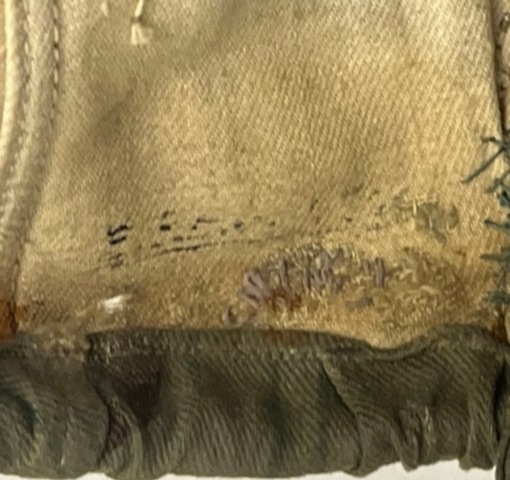
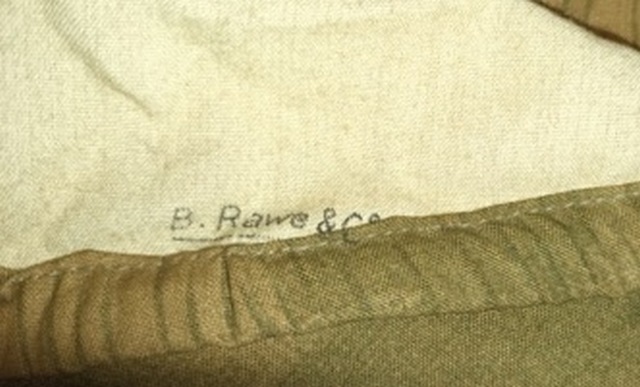
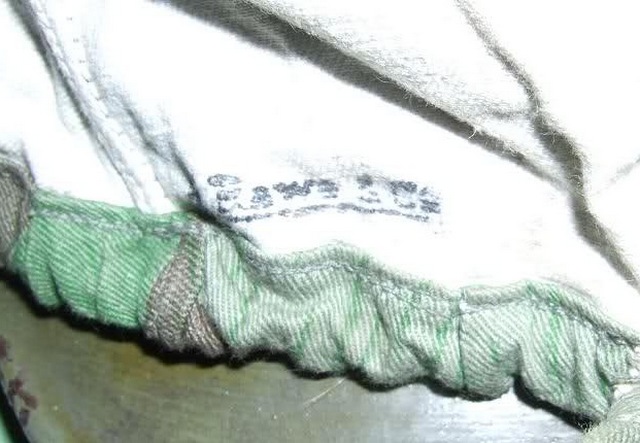
Code Cantz & Ziegler, (city of Stuttgart - Germany)
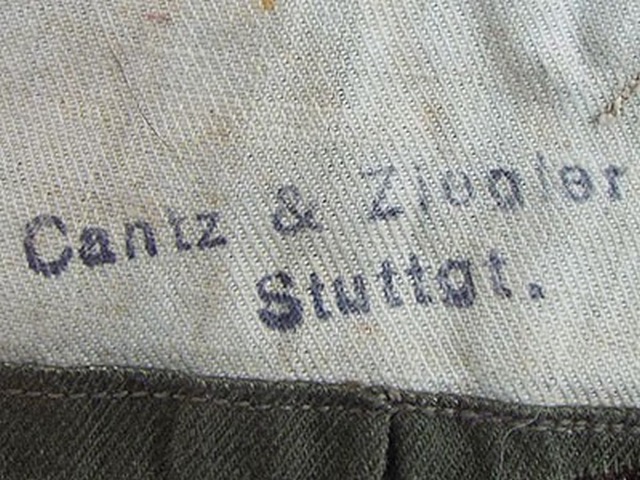
Code Str Werk Fisher Strassburg M42 (Strasbourg, France)
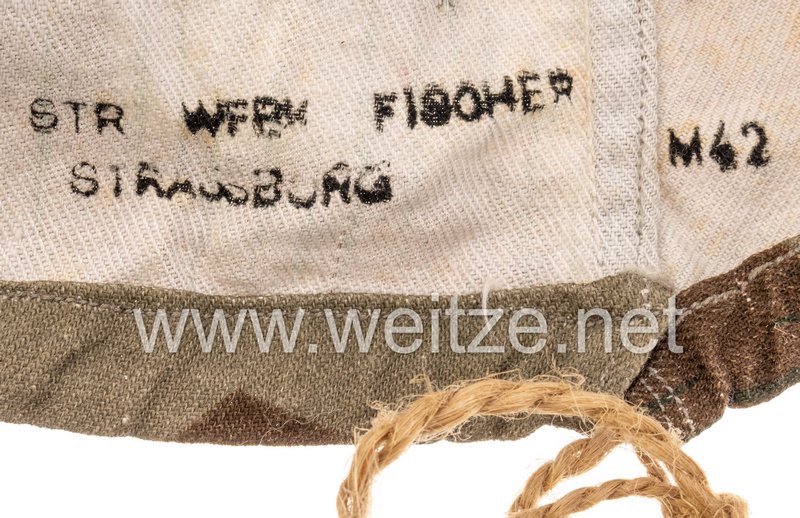
Code I9
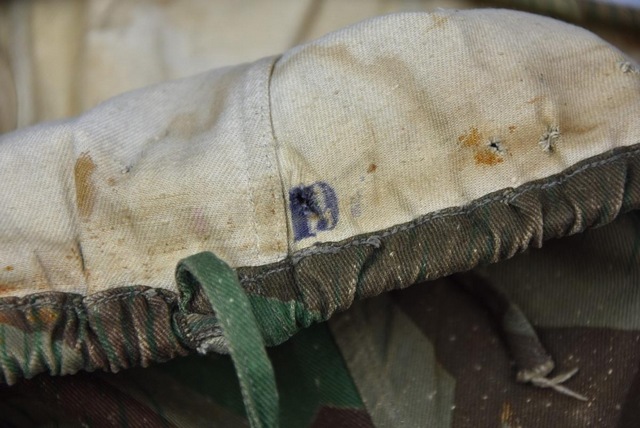
Code 419
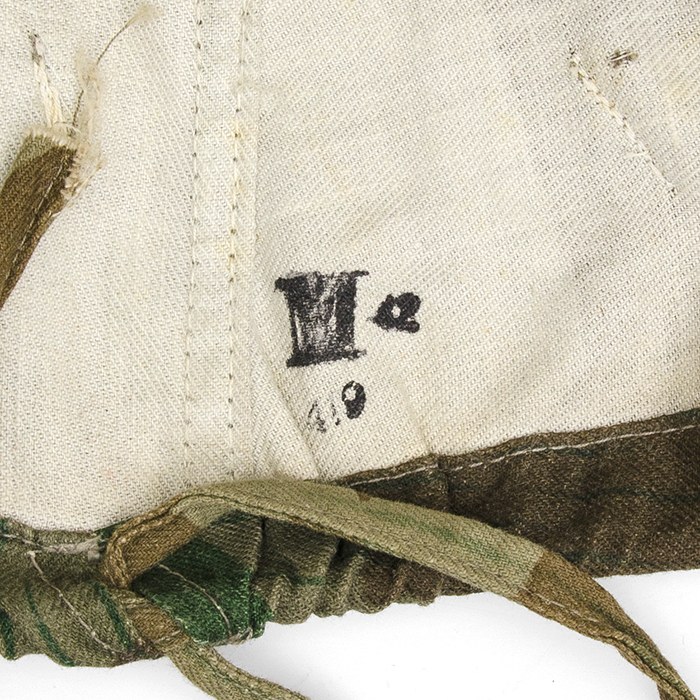
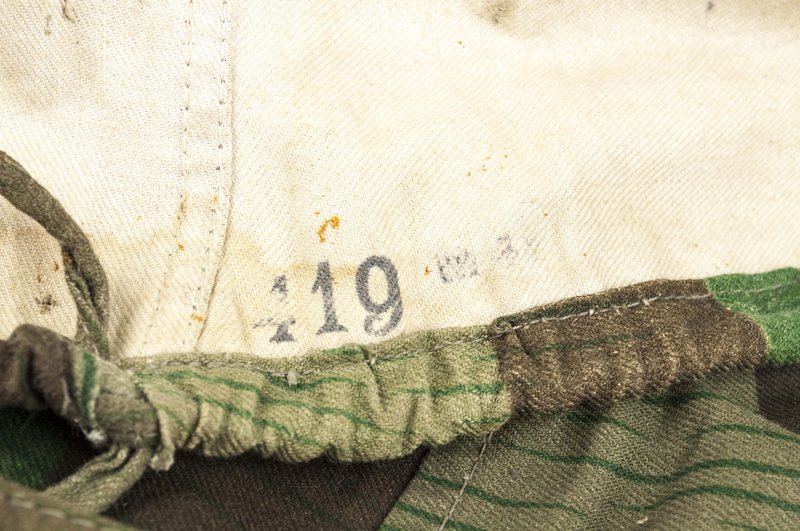
Code 430


Code 543 M42
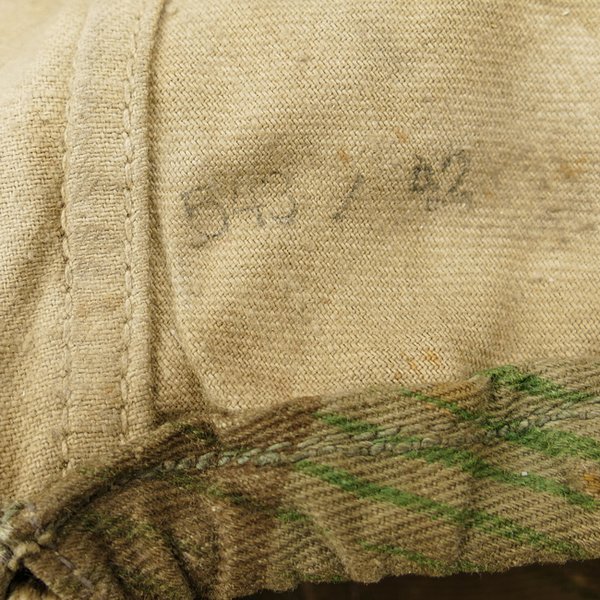
Code 544 / 42 X
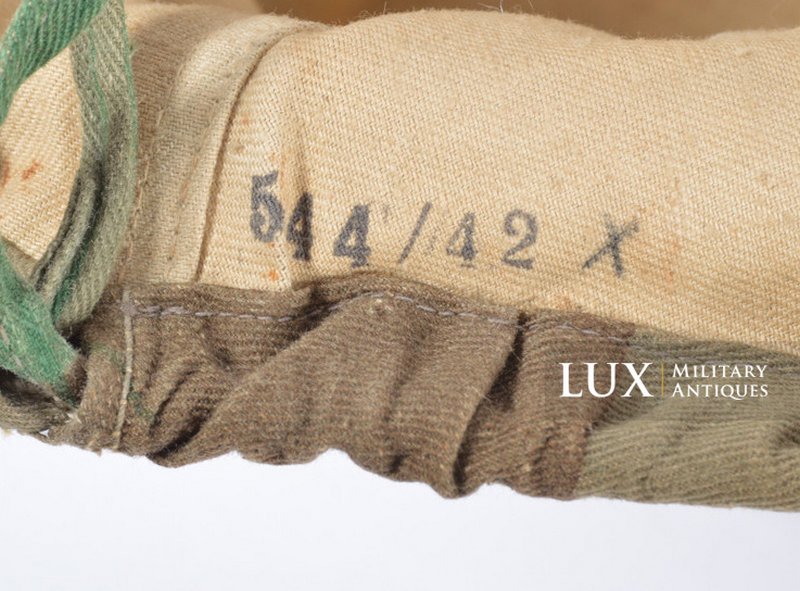
Code R 6283
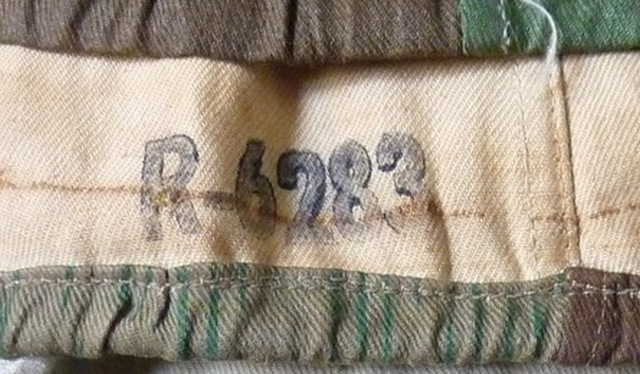
Code Reich Lindenberg
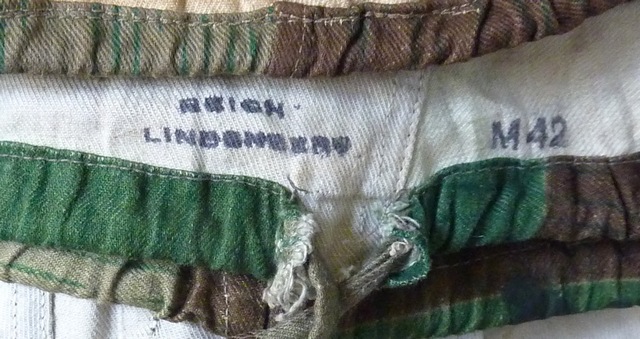
Code Schneider & Hesse, (city of Hannover, Lower Saxony - Germany)
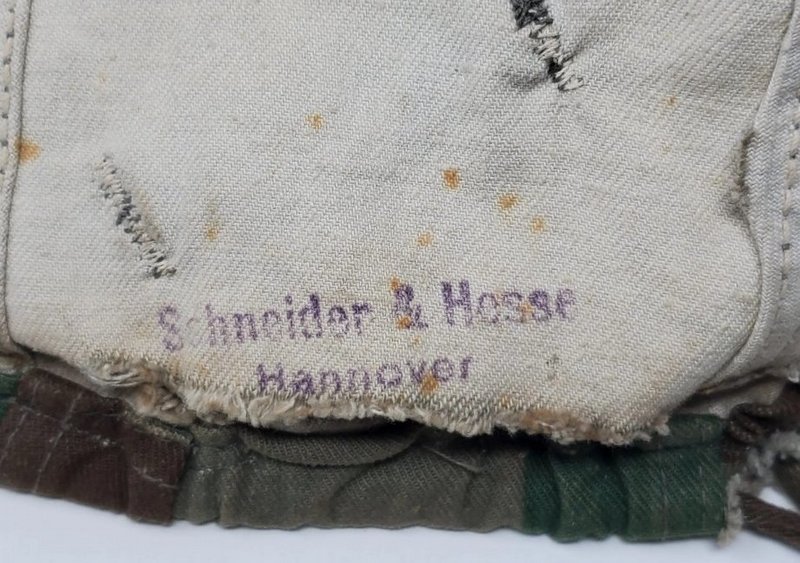
Code SS 204


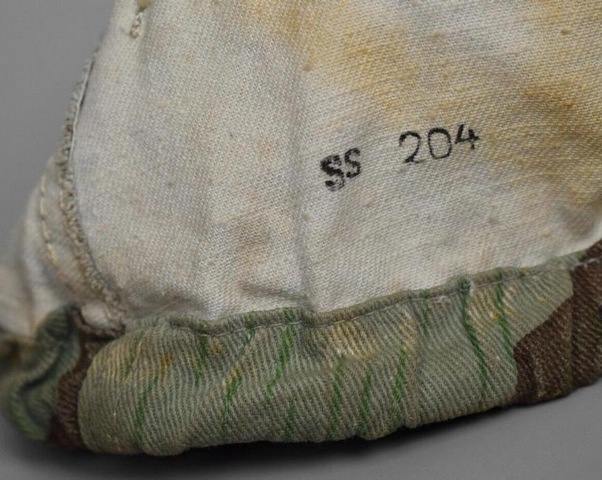
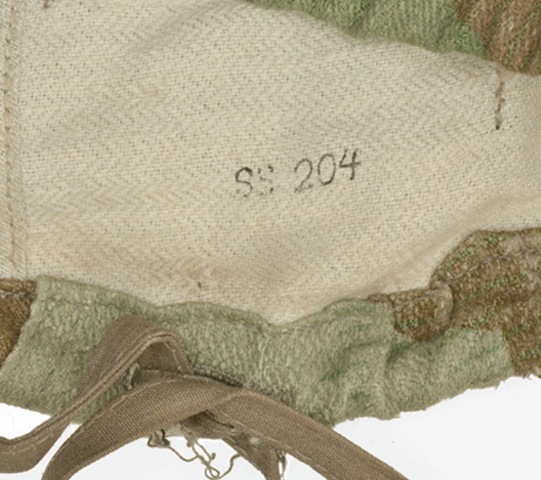
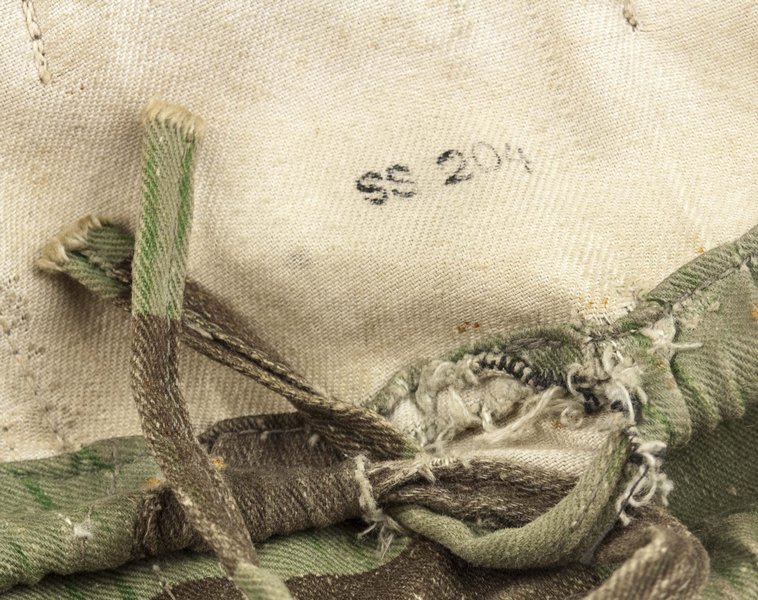
Code SS 405
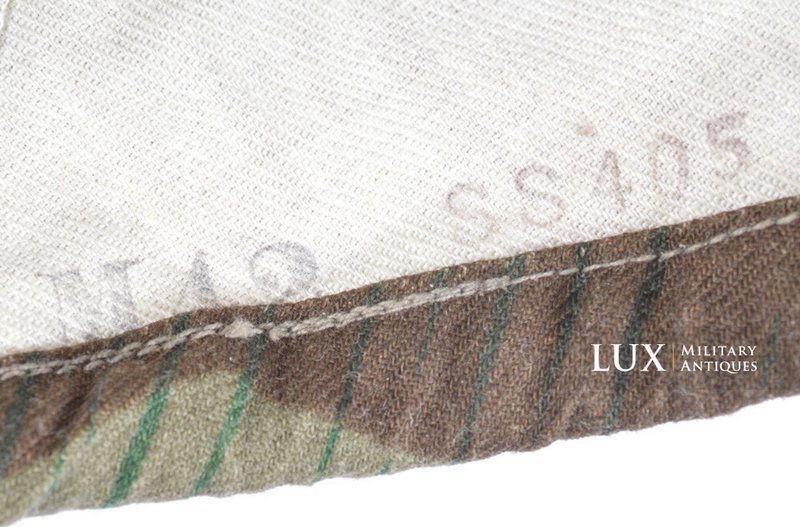
Code SS 408
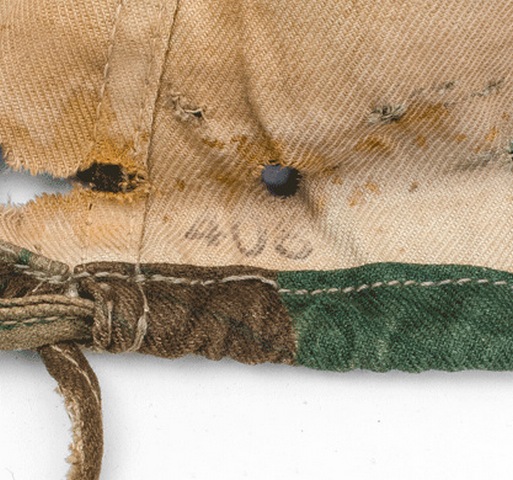
Code SS 421
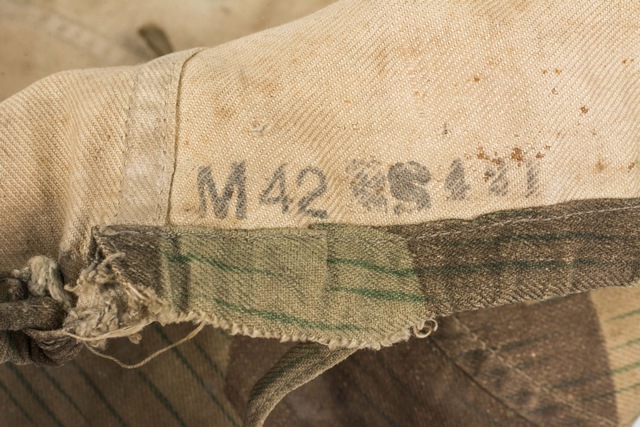
Code SS 609
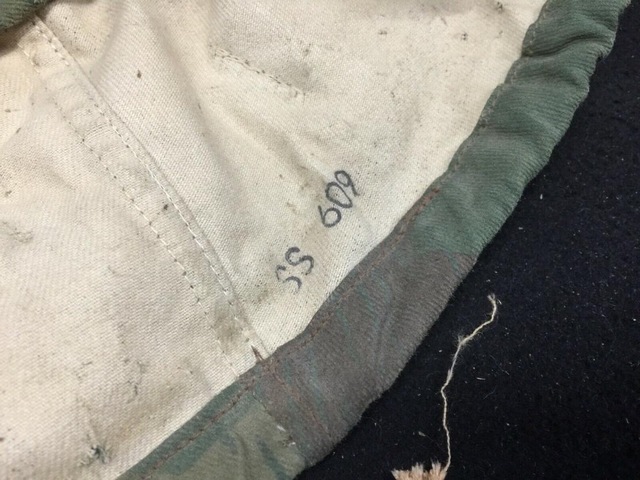
Code SS 4829 (reused by Pathé Cinéma)
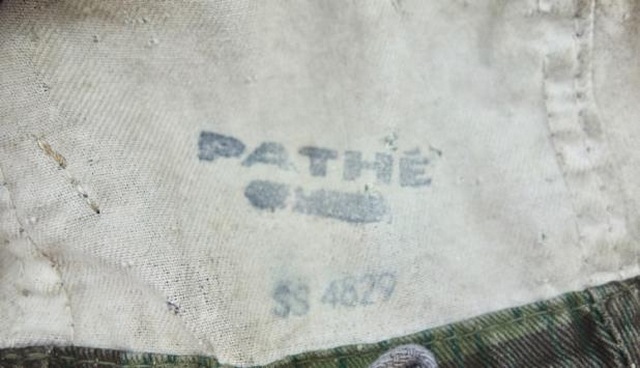
Code SS 03208

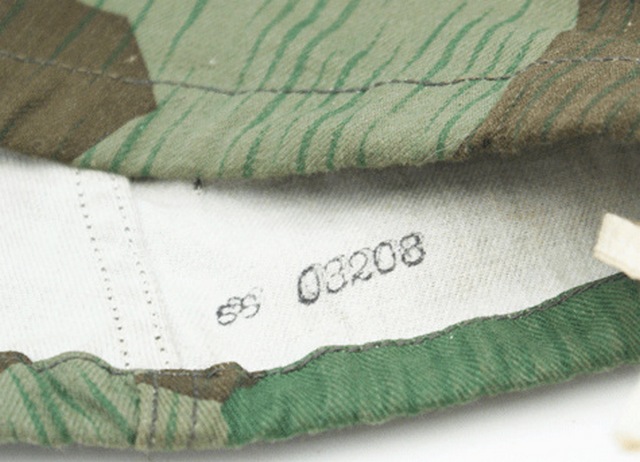

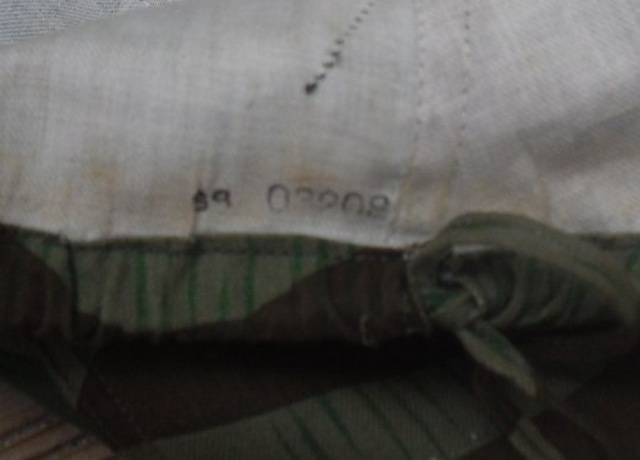

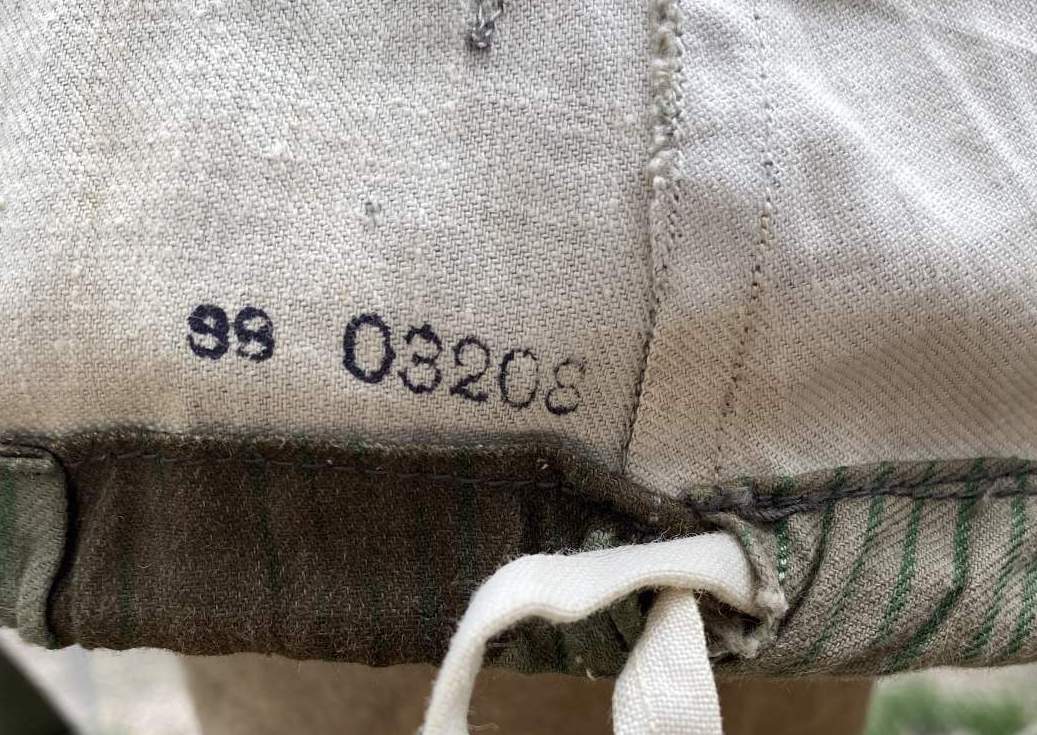
Code SS 03210
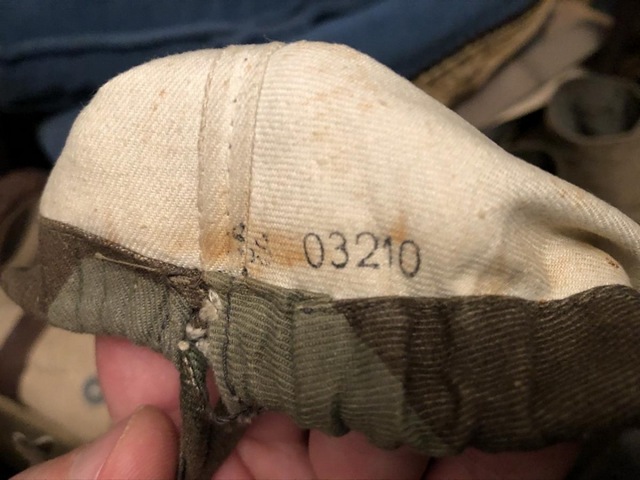
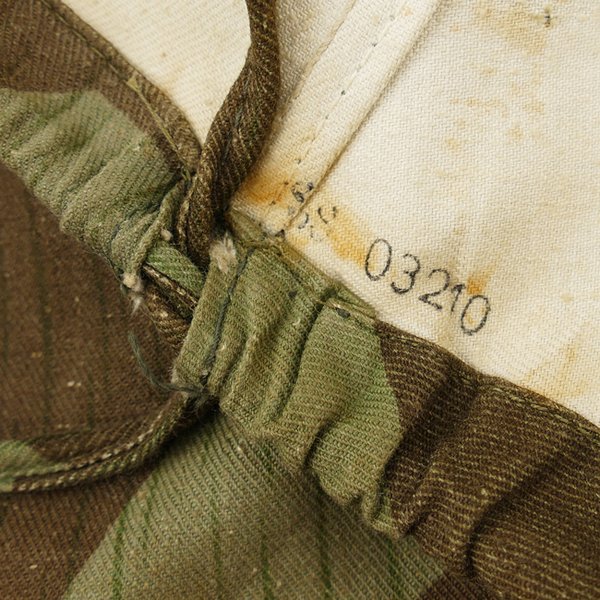
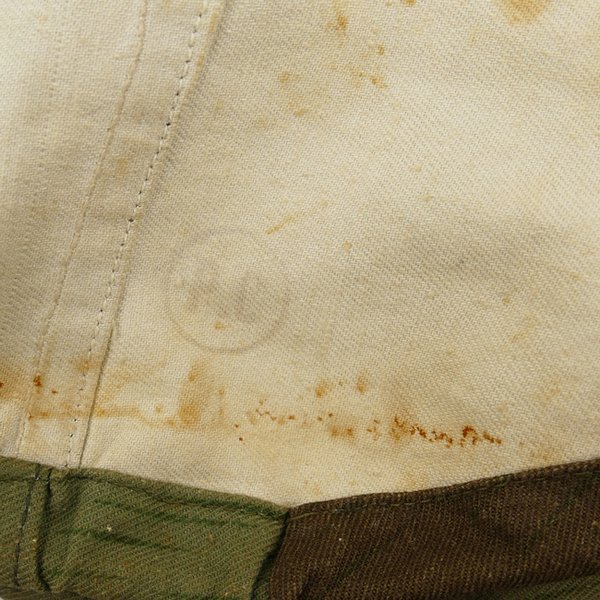
Code SS 03212

Code SS 03213
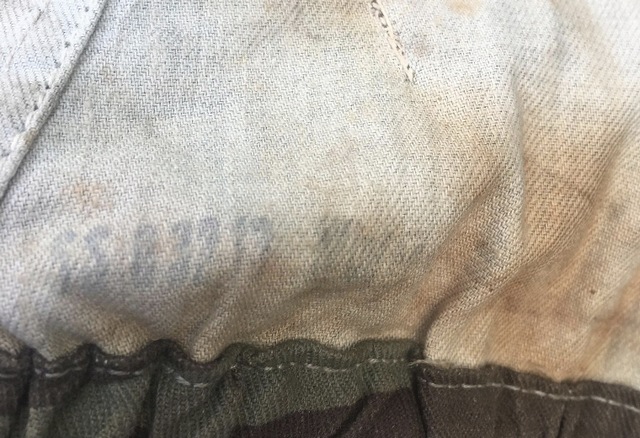
Code W Lago W (Wien - Austria)
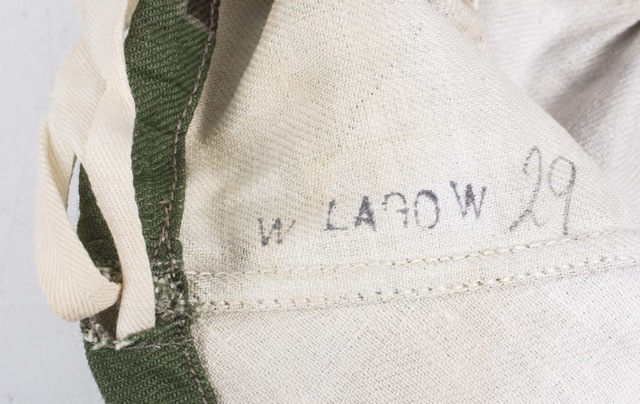
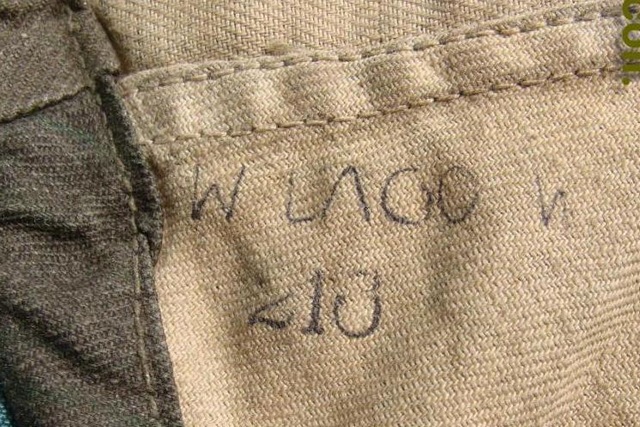
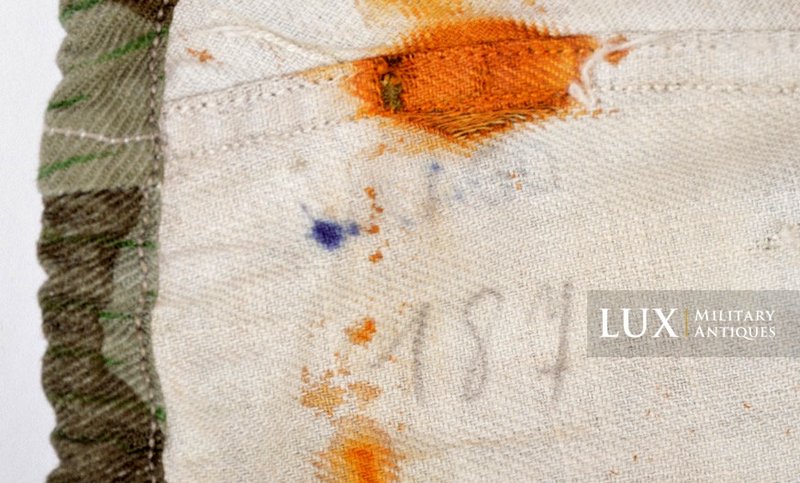
Code Wäschefabrik Augsburg M41 (Wäschefabrik Augsburg, F.&K. Oelkrug Augsburg, Bavaria - Germany)
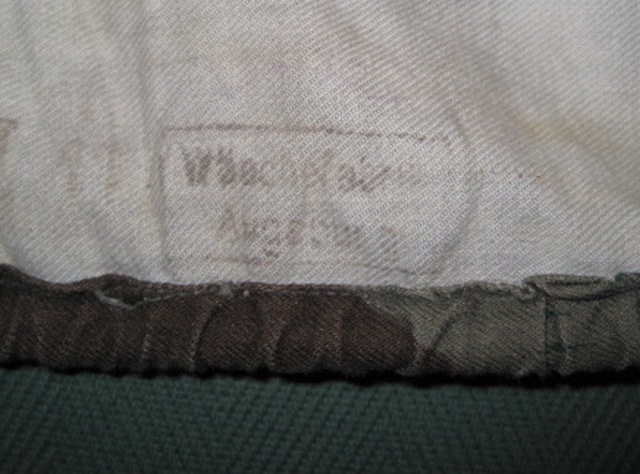
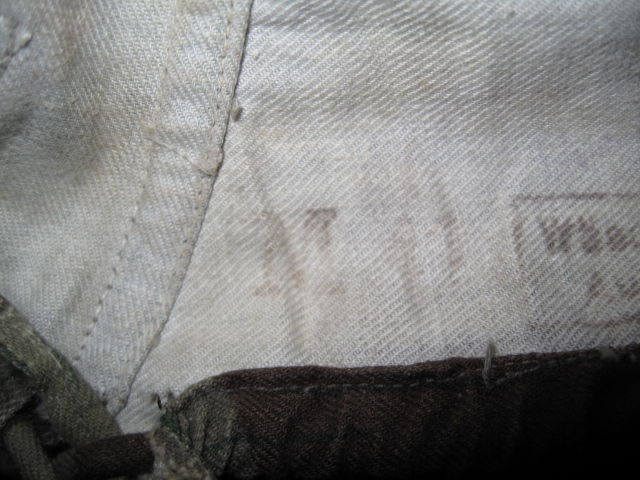
Comments on copies
Be careful not to confuse them with post-war Swiss or German helmet covers.
Furthermore, unless you discover them yourself - without a doubt - in the attic of an old abandoned house, so-called “field” helmet covers made of simple zeltbahn canvas, more or less well sewn, with rope drawstrings, are likely to be mere copies (at best for re-enactors and, at worst, to mislead collectors).
Photos on the field
Observing the wearing of helmet covers (whether Heer or Luftwaffe) is not uncommon. See the photos below (click the pictures to enlarge):
You can notice that sometime, Wehrmacht soldiers are using Waffen-SS hemet covers
Such as the opposite:
And even Allied soldiers:
Back
